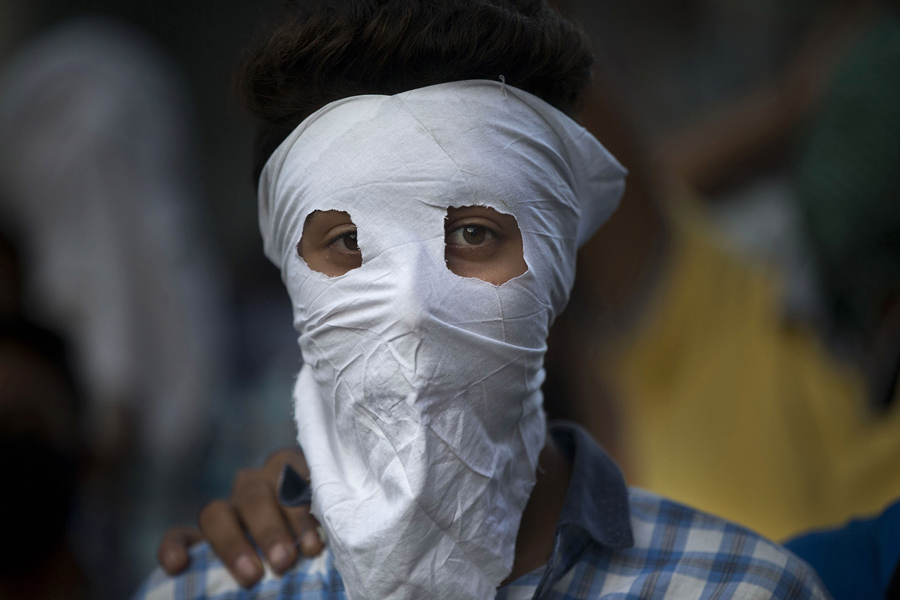
A masked Kashmiri protester stands during a
protest against India after a day-long curfew in Srinagar, Indian
controlled Kashmir. Kashmir has been under a security
lockdown and curfew since the killing of a popular rebel commander on
July 8 sparked some of the largest protests against Indian rule in
recent years: photo by Dar Yasin/AP, 8 August 2016

An Indian paramilitary soldier falls down as he
tries to kick back an exploded tear gas shell thrown back at them by
Kashmiri Muslim protesters at the end of a day long curfew in Srinagar,
Indian controlled Kashmir: photo by Dar Yasin/AP, 8 August 2016
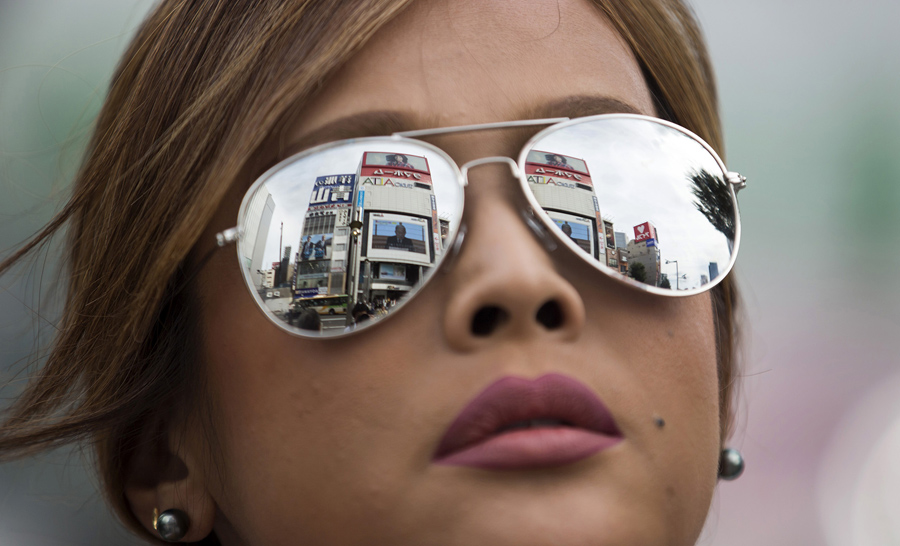
A woman looks at a monitor showing Japan's Emperor
Akihito delivering a speech in a video message in
Tokyo, Japan. Japan's Emperor Akihito addressed to the nation in a rare
video message on his worry that it may become difficult to carry out his
duties as the symbol of the State considering his fitness level
gradually declining. This will raise a debate in Japan
as the current Japanese law states the Emperor serves until death.: photo by Tomohiro Ohsumi, 8 August 2016

A Filipino boy watches local man Ranie Retura swim with his dog named "Brownie" as rain pours in suburban Navotas, north of Manila, Philippines. Classes were suspended in most parts of Metro Manila due to heavy rains.: photo by Aaron Favila / AP, 9 August 2016

Secret Service officers work to secure U.S. Democratic presidential nominee Hillary Clinton after a protester jumped into the buffer during a rally at Lincoln High School in Des Moines, Iowa: photo by Chris Keane / Reuters, 10 August 2016

Female Syria Democratic Forces (SDF) fighters embrace each other in the city of Manbij, in Aleppo Governorate, Syria: photo by Rodi Said / Reuters, 10 August 2016

A man shows a vulgar gesture as the motorcade carrying Democratic presidential nominee Hillary Clinton passes by on its way to a campaign rally at the Exhibition Hall in Kissimmee, Florida: photo by Joe Raedle, 8 August 2016

Rebel fighters fire towards positions of regime forces in Ramussa on the southwestern edges of Syria's northern city of Aleppo Syrian rebels said they have broken a three-week government siege of second city Aleppo, turning the tables on Russian-backed regime forces who are now on the defensive.: photo by Fadi Al-Halabi / AFP, 6 August 2016


Migrants support each other after being rescued and transferred to an Italian Coast Guard vessel in the central Mediterranean Sea on Thursday.: photo by Manu Brabo/Associated Press, 8 August 2016

Migrants support each other after being rescued and transferred to an Italian Coast Guard vessel in the central Mediterranean Sea on Thursday.: photo by Manu Brabo/Associated Press, 8 August 2016

Migrants from Nigeria and Ivory Coast rested on a vessel after being rescued from the Mediterranean on Wednesday.: photo by Manu Brabo/Associated Press, 8 August 2016


A woman walked by a boutique selling Saudi-style clothing in downtown Cairo: photo by Nariman El-Mofty/Associated Press, 12 August 2016

A woman walked by a boutique selling Saudi-style clothing in downtown Cairo: photo by Nariman El-Mofty/Associated Press, 12 August 2016

Smoke rising last month over Aleppo, Syria, from tires burned to decrease the visibility of pilots from the Assad government and Russian forces.: photo by Beha el Halebi/Anadolu Agency, 12 August 2016

Smoke rising last month over Aleppo, Syria, from tires burned to decrease the visibility of pilots from the Assad government and Russian forces.: photo by Beha el Halebi/Anadolu Agency, 12 August 2016
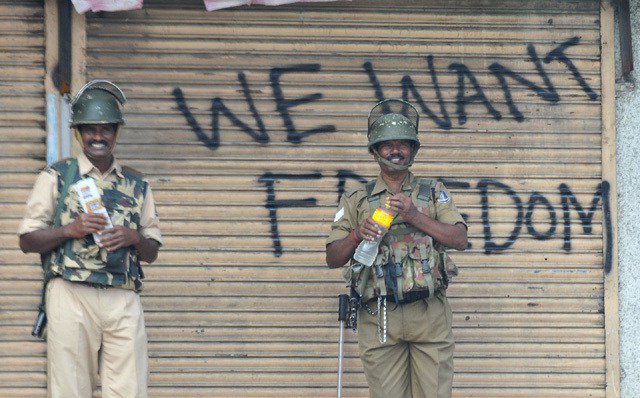
What Kashmir says. All parties meet today to talk about #Kashmir. But are they prepared to hear the Kashmiris?: image via Kashmir Global, 12 August 2016
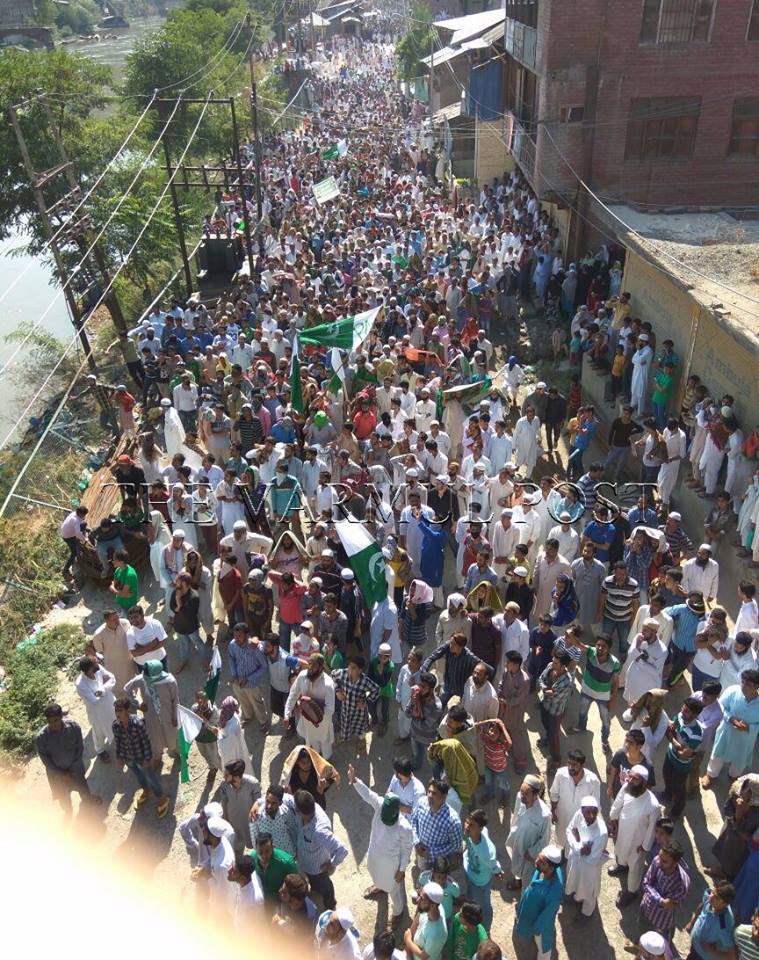
Kashmir 35th Day: Curfew, shutdown, clashes continue #Kashmir Srinagar, Aug 12 (KNS): image via Kashmir Global @kashmirglobal, 13 August 2016



Pic: Written in blood "Go India Go Back" A protest rally against indian occupation of #Kashmir at Pantha Chowk: image via Syed Ali Geelani @sageelani, 13 August 2016
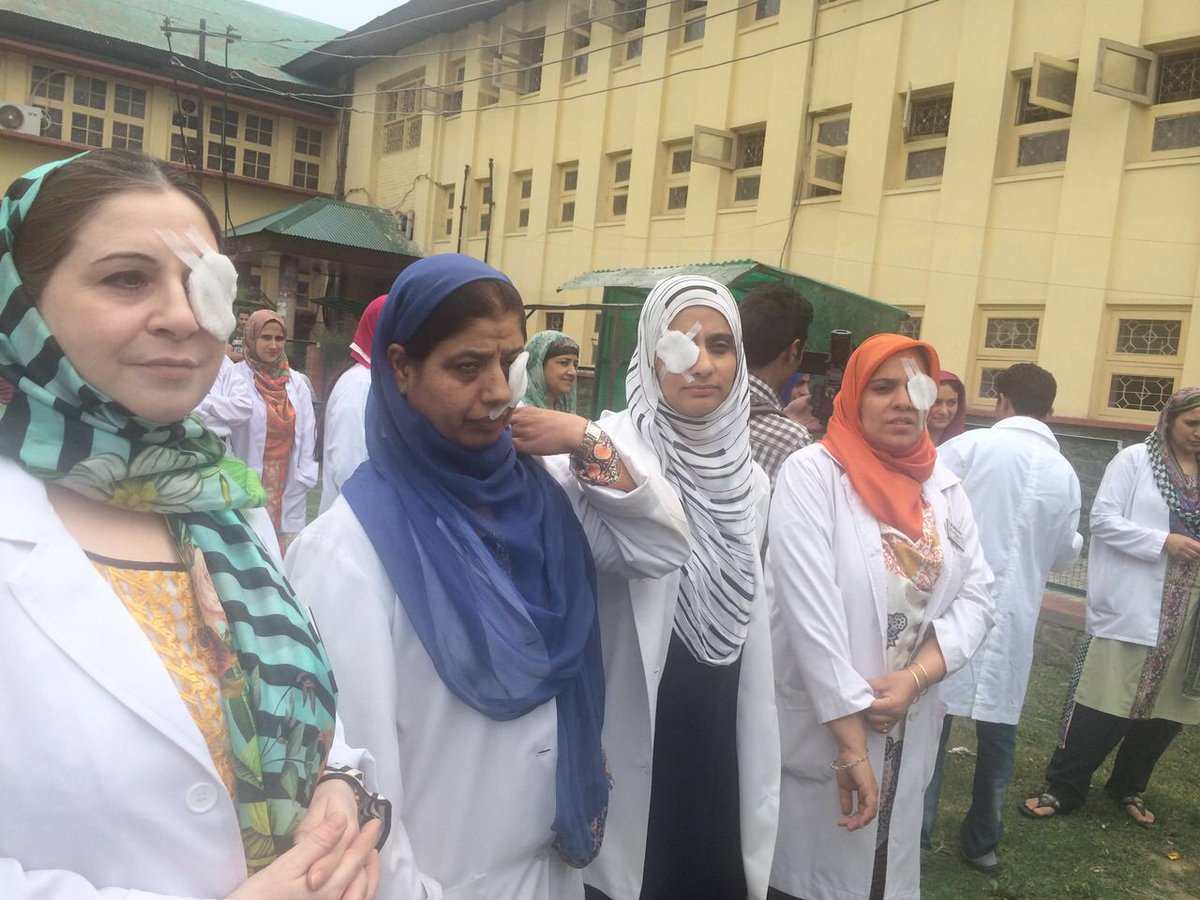
Senior doctors outside SMHS hospital protesting in a unique way. Message, stop firing pellets on eyes of protesters.: image via Mufti Islah @islahmufti, 10 August 2016

This is how Indian occupation forces treats lawmakers In #Kashmir. Er Rashid, lawmaker. Srinagar. 12 August 2016: image via Javaid Shaikh @javaidShaikh, 12 August 2016

This is how Indian occupation forces treats lawmakers In #Kashmir. Er Rashid, lawmaker. Srinagar. 12 August 2016: image via Javaid Shaikh @javaidShaikh, 12 August 2016

This is how Indian occupation forces treats lawmakers In #Kashmir. Er Rashid, lawmaker. Srinagar. 12 August 2016: image via Javaid Shaikh @javaidShaikh, 12 August 2016

This is how Indian occupation forces treats lawmakers In #Kashmir. Er Rashid, lawmaker. Srinagar. 12 August 2016: image via Javaid Shaikh @javaidShaikh, 12 August 2016
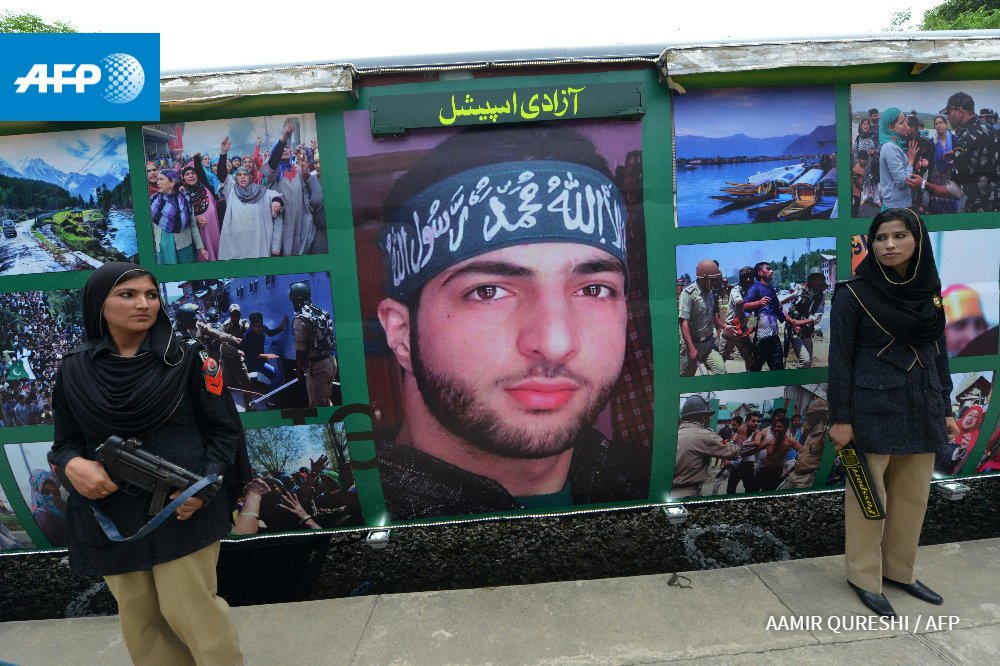

A Pakistani railway official waves a green flag to start the Independence Train in Islamabad: image via AFP Islamabad/Kabul, 11 August 2016
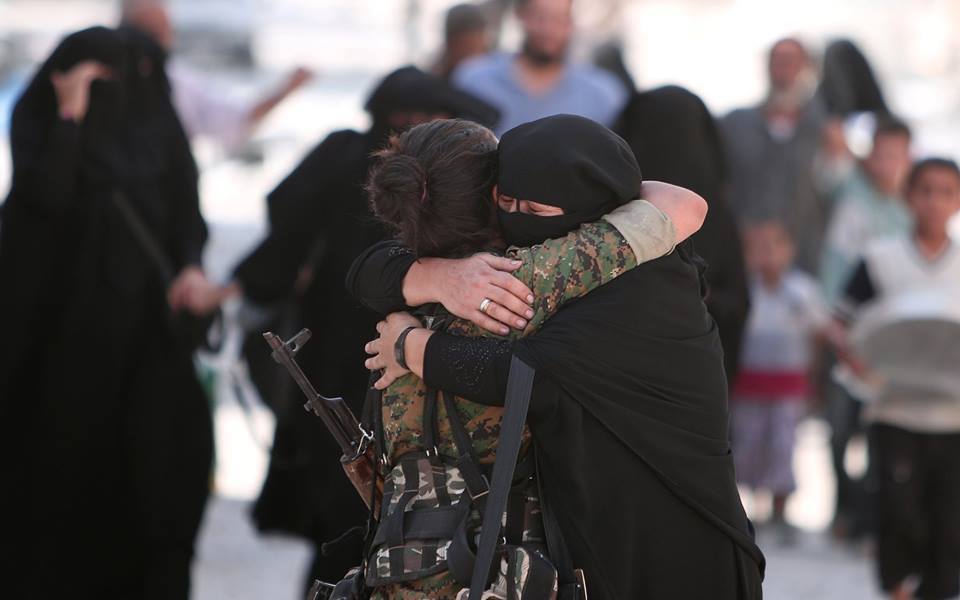
Celebrating the liberation of #Manbij from #ISIS. #Aleppo #SDF: image via Basileus Zeno @Basileus Zeno, 13 August 2016

Celebrating the liberation of #Manbij from #ISIS. #Aleppo #SDF: image via Basileus Zeno @Basileus Zeno, 13 August 2016
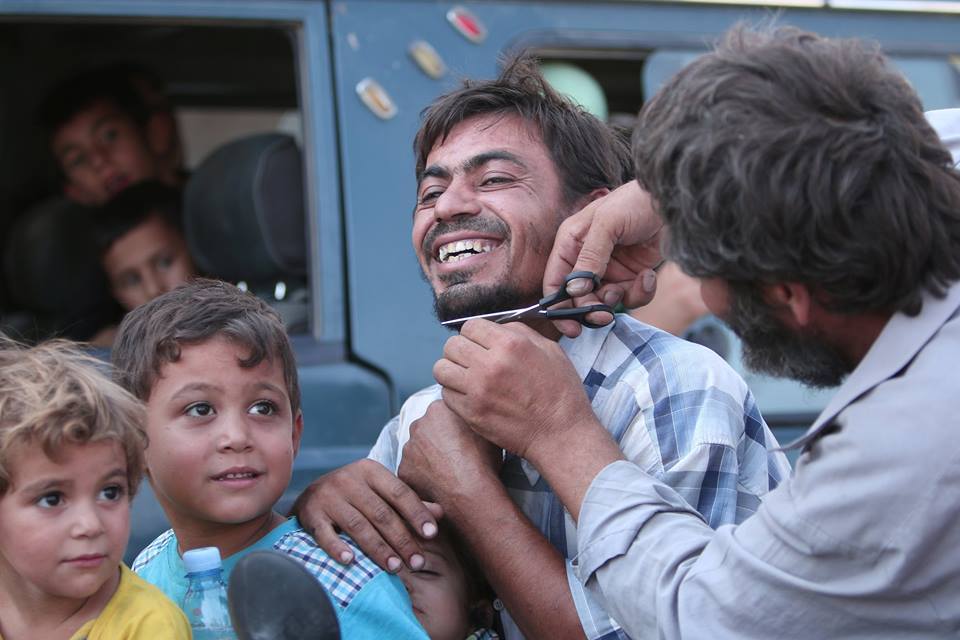
Celebrating the liberation of #Manbij from #ISIS. #Aleppo #SDF: image via Basileus Zeno @Basileus Zeno, 13 August 2016
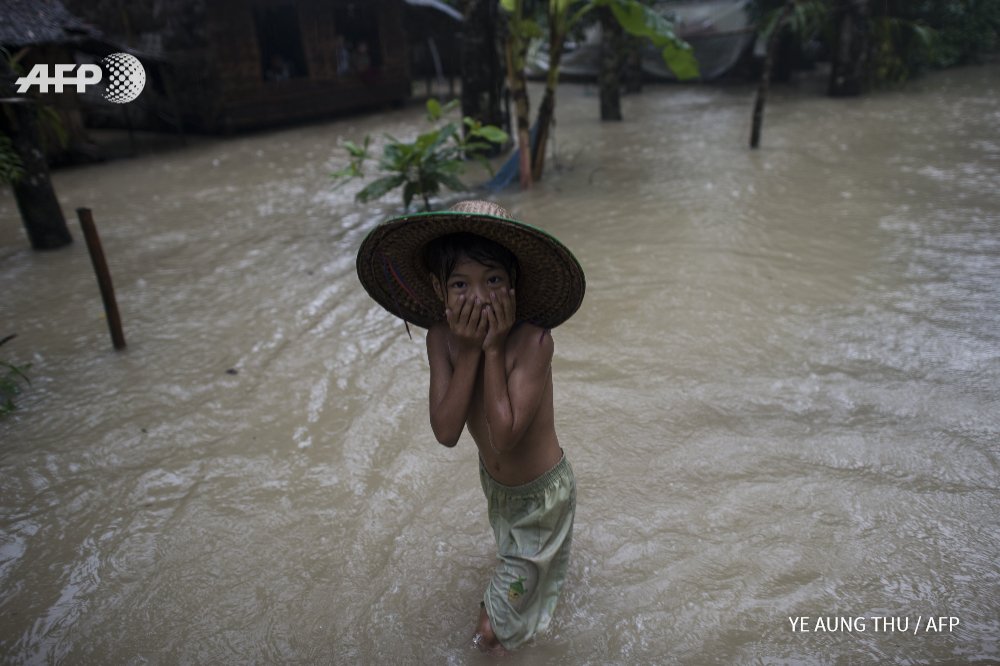
MYANMAR - A child walks in floodwaters in Kyangyi Dauk village near Darka. By @ye_aung_thu #AFP: image via Frédérique Geffard @fgeffardAFP, 2 August 2016
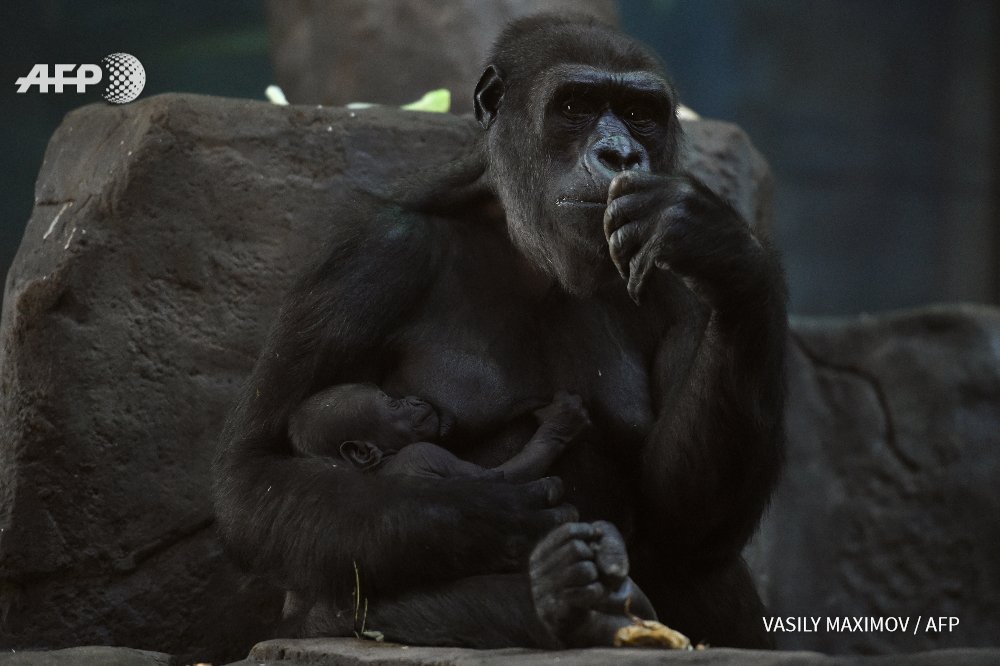
RUSSIA - Gorilla Kira holds her baby born at the zoo in Moscow. By @vasilymaximov #AFP: image via Frédérique Geffard @fgeffardAFP, 11 August 2016

IVORY COAST - A woman holds a baby as she sits on a bed under a mosquito net in Abidjan. By Sia Kambou #AFP: image via Frédérique Geffard @fgeffardAFP, 11 August 2016
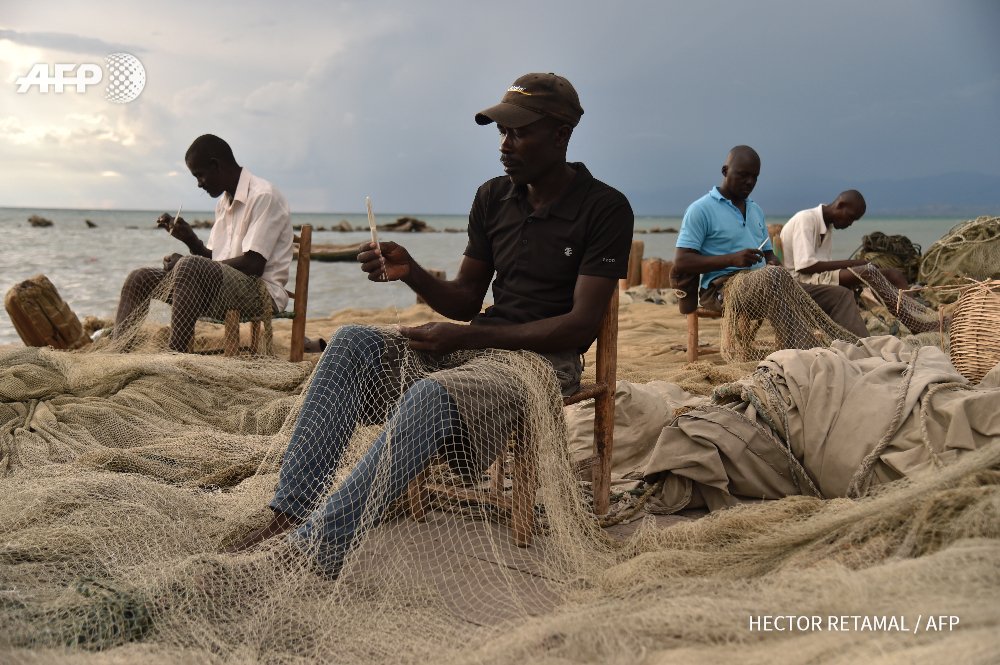
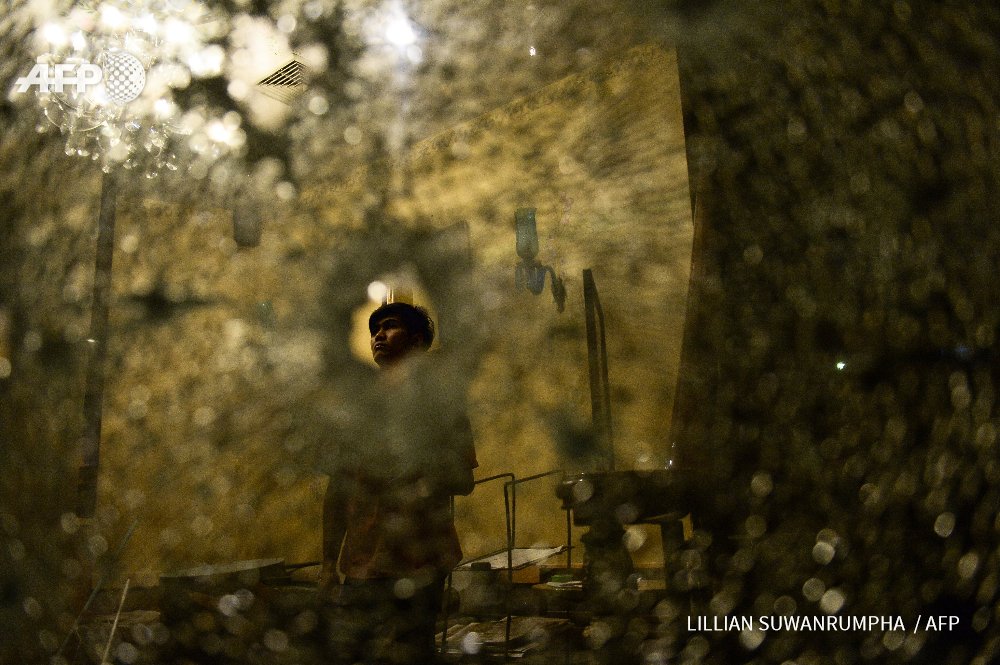

SYRIA - Syrians buy sweets at a market in an opposition-held district in Aleppo. By @THAER_MOHAMMED #AFP: image via Frédérique Geffard @fgeffardAFP, 12 August 2016
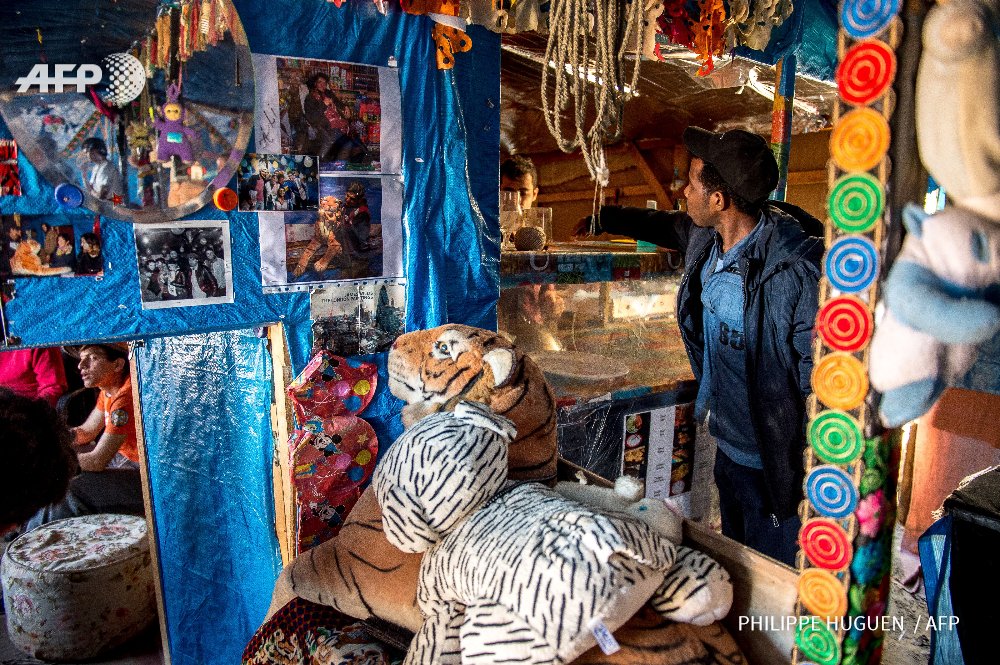
FRANCE - A migrant orders a tea in a makeshift restaurant in 'Jungle' migrant camp in Calais. By Philippe Huguen: image via AFP Photo Department @AFPphoto, 12 August 2016
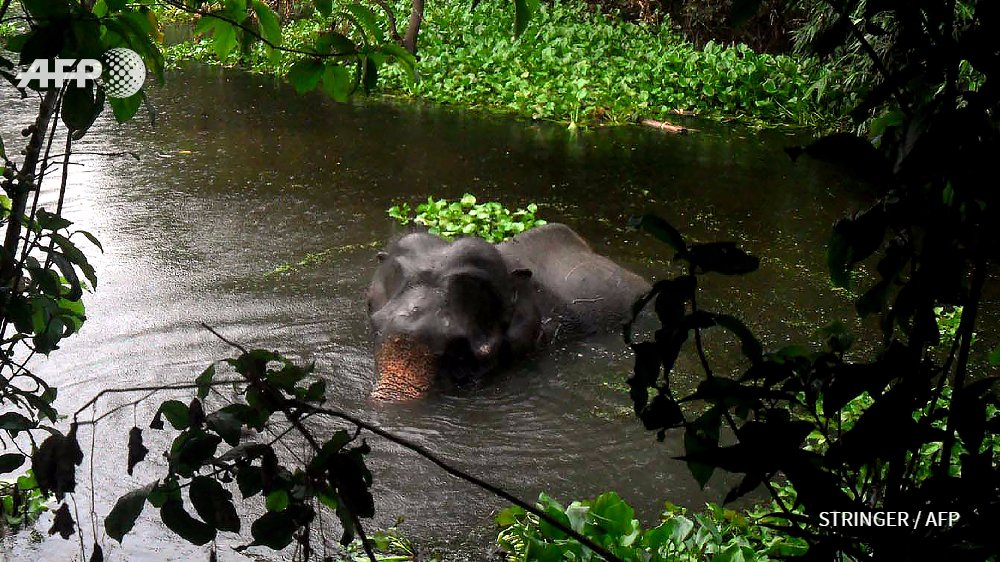
An elephant separated from its herd by floods is saved from drowning by villagers in Bangladesh #WorldElephantDay: image via AFP news agency @AFP, 12 August 2016
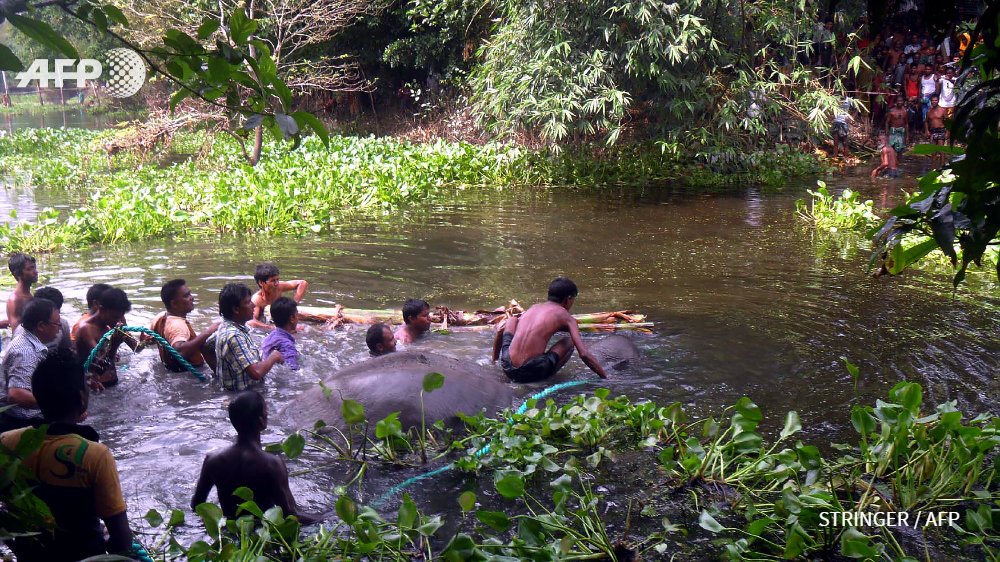
An elephant separated from its herd by floods is saved from drowning by villagers in Bangladesh #WorldElephantDay: image via AFP news agency @AFP, 12 August 2016
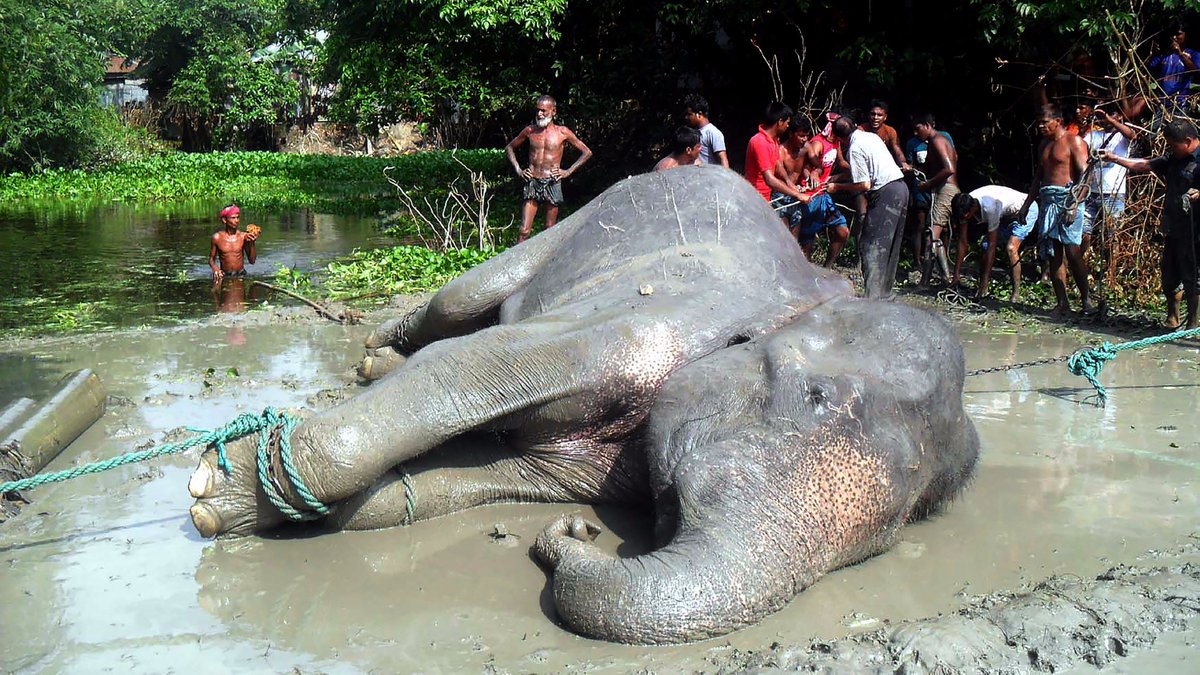
An elephant separated from its herd by floods is saved from drowning by villagers in Bangladesh #WorldElephantDay: image via AFP news agency @AFP, 12 August 2016
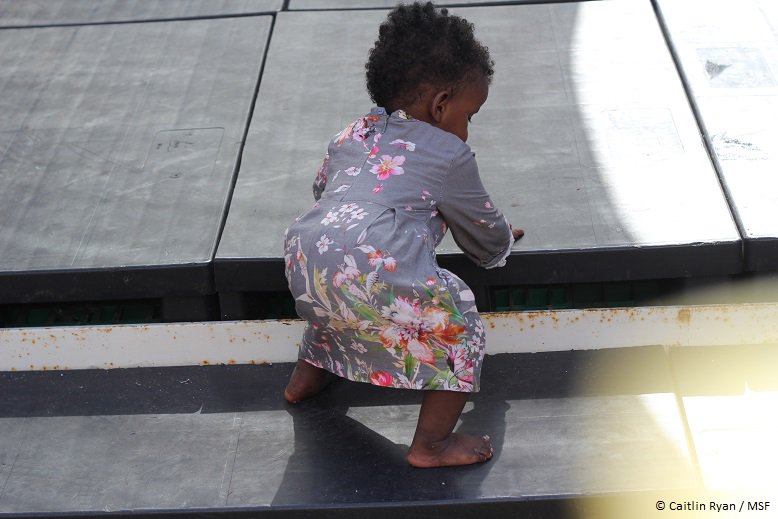
In #Libya, thousands of parents are watching their babies learn to walk in makeshift migrant prisons: image via MSF Sea Verified account MSF_Sea, 11 August 2016
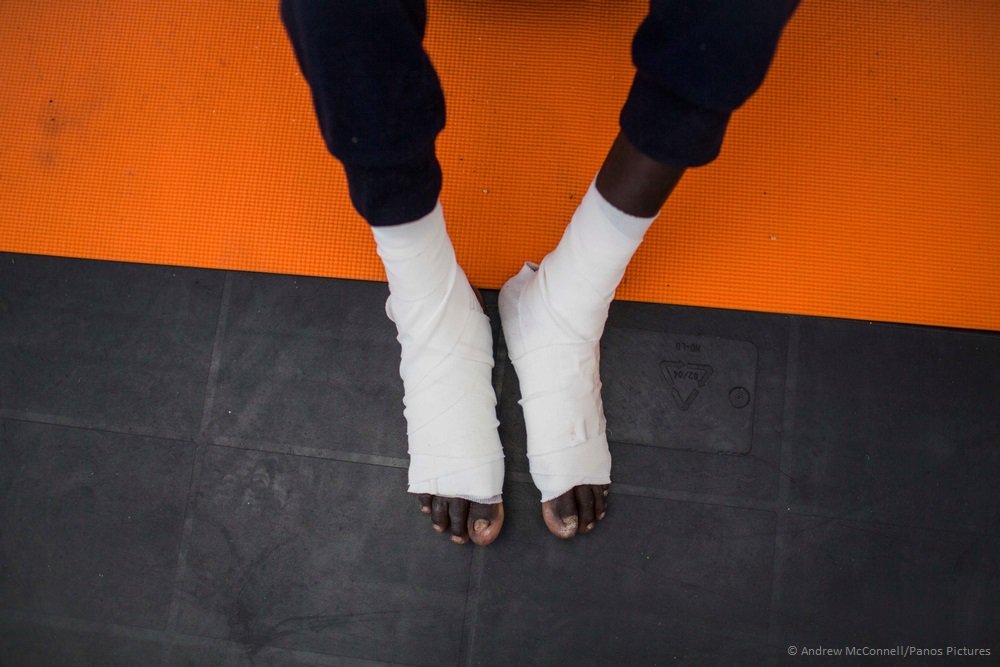
On week ago in #Libya, this man was repeatedly beaten with an iron bar on the soles of his feet. He's in agony.: image via MSF Sea Verified account MSF_Sea, 11 August 2016
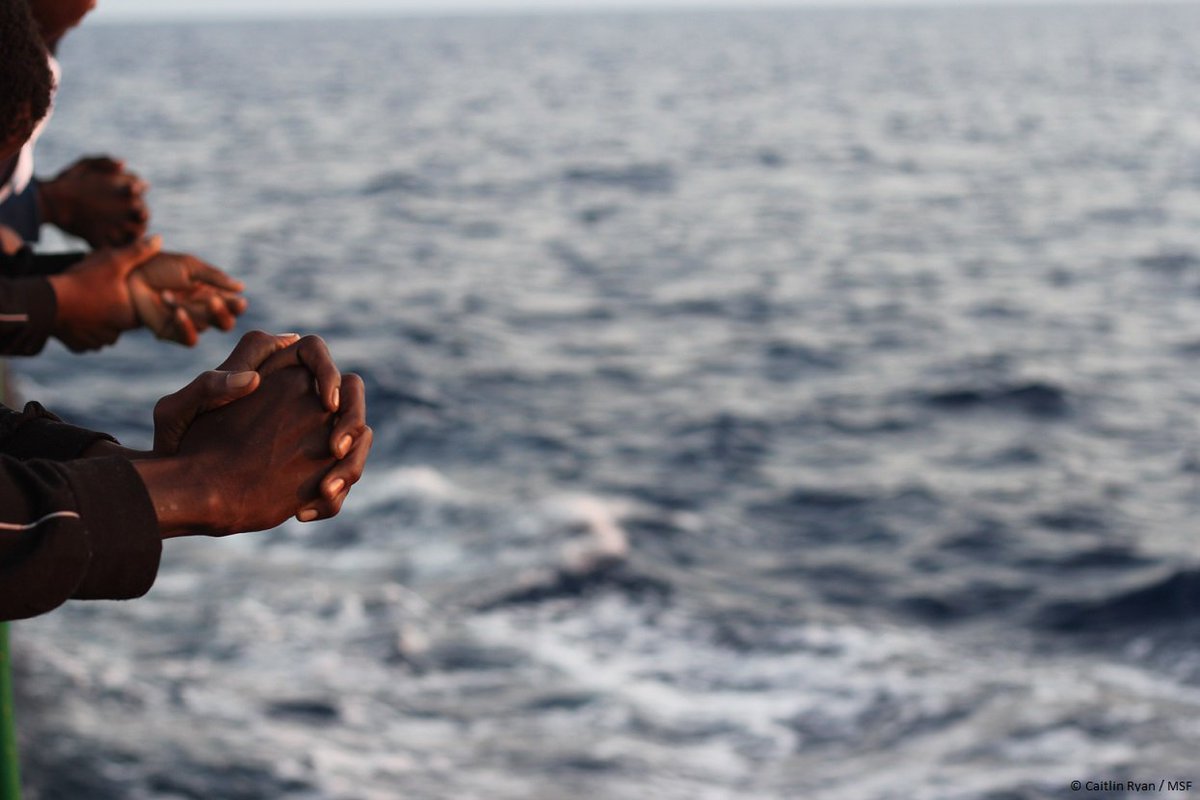

A Filipino boy watches local man Ranie Retura swim with his dog named "Brownie" as rain pours in suburban Navotas, north of Manila, Philippines. Classes were suspended in most parts of Metro Manila due to heavy rains.: photo by Aaron Favila / AP, 9 August 2016

Secret Service officers work to secure U.S. Democratic presidential nominee Hillary Clinton after a protester jumped into the buffer during a rally at Lincoln High School in Des Moines, Iowa: photo by Chris Keane / Reuters, 10 August 2016

Female Syria Democratic Forces (SDF) fighters embrace each other in the city of Manbij, in Aleppo Governorate, Syria: photo by Rodi Said / Reuters, 10 August 2016

A man shows a vulgar gesture as the motorcade carrying Democratic presidential nominee Hillary Clinton passes by on its way to a campaign rally at the Exhibition Hall in Kissimmee, Florida: photo by Joe Raedle, 8 August 2016

Rebel fighters fire towards positions of regime forces in Ramussa on the southwestern edges of Syria's northern city of Aleppo Syrian rebels said they have broken a three-week government siege of second city Aleppo, turning the tables on Russian-backed regime forces who are now on the defensive.: photo by Fadi Al-Halabi / AFP, 6 August 2016

A man demolishes a statue in Jinan, Shandong Province, China: photo by Reuters, 5 August 2016

Ostriches wear masks as they are transported by a truck for relocation in Zhengzhou, Henan Province, China: photo by China Daily / Reuters, 8 August 2016

Ostriches wear masks as they are transported by a truck for relocation in Zhengzhou, Henan Province, China: photo by China Daily / Reuters, 8 August 2016

Migrants support each other after being rescued and transferred to an Italian Coast Guard vessel in the central Mediterranean Sea on Thursday.: photo by Manu Brabo/Associated Press, 8 August 2016

Migrants support each other after being rescued and transferred to an Italian Coast Guard vessel in the central Mediterranean Sea on Thursday.: photo by Manu Brabo/Associated Press, 8 August 2016

Migrants from Nigeria and Ivory Coast rested on a vessel after being rescued from the Mediterranean on Wednesday.: photo by Manu Brabo/Associated Press, 8 August 2016

Migrants from Nigeria and Ivory Coast rested on a vessel after being rescued from the Mediterranean on Wednesday.: photo by Manu Brabo/Associated Press, 8 August 2016

A woman walked by a boutique selling Saudi-style clothing in downtown Cairo: photo by Nariman El-Mofty/Associated Press, 12 August 2016

A woman walked by a boutique selling Saudi-style clothing in downtown Cairo: photo by Nariman El-Mofty/Associated Press, 12 August 2016

Smoke rising last month over Aleppo, Syria, from tires burned to decrease the visibility of pilots from the Assad government and Russian forces.: photo by Beha el Halebi/Anadolu Agency, 12 August 2016

Smoke rising last month over Aleppo, Syria, from tires burned to decrease the visibility of pilots from the Assad government and Russian forces.: photo by Beha el Halebi/Anadolu Agency, 12 August 2016
What Kashmir says

What Kashmir says. All parties meet today to talk about #Kashmir. But are they prepared to hear the Kashmiris?: image via Kashmir Global, 12 August 2016
What
Kashmir says: All parties meet today to talk about Kashmir. But are
they prepared to hear the Kashmiris? Muzamil Jaleel, Kashmir Global via
Indian Express, 12 August 2016
I have been a journalist for the last 22 years and I feel my curse is to
write the same story, again and again. That story is Kashmir. It is in
essence a single story where like Sisyphus’s rock, efforts to resolve
the dispute go through a similar and endless journey each time it is
pushed up the mountain.
There is a script, a standard operating procedure is put into play each time Kashmir erupts, seeking “azadi” from India. So this time, when after more than a month of total lockdown, killing of 56 young Kashmiris, and blinding of hundreds of others, New Delhi finally decided to hold an all-party meeting, I am not wondering about the outcome of this effort. It has happened before. I have seen it.
There will be a promise of a “dialogue with all stakeholders”, with the compulsory disclaimer that Jammu and Kashmir is an integral part of India. A group of parliamentarians may go to the Valley to “meet and ascertain” the reason for the uprising as if it is unknown to those in the corridors of power in Delhi. By the time the all-party delegation gets to Srinagar, Indian intelligence and security agencies would have gathered the same handful of groups for the meeting.
Like in 2010, wholesale mutton dealers will show up, shikarawallas will be rowed in and apple growers will be brought. Voices palatable to New Delhi will be told to spell out their requirements, while a few bureaucrats-turned-civil society members and former Ikhwanis-turned-politicians known to New Delhi’s dialogue circuit will be shooed in.
This time, though, the ground has shifted. There are two reasons for it.
First, the complexion of the uprising has changed on the ground and the movement for azadi has transcended human rights issues. Unlike previous upsurges in 2008, 2009 and 2010, the protestors aren’t angry against a civilian killing. Though there are a number of reasons for this accumulated anger, the trigger for this massive outpouring explains the shift.
These large gatherings aren’t a protest against the killing of Kashmiri militant Burhan Wani. Instead, Kashmir has risen to endorse what Burhan stood for and the consensus seems to be around one theme: “We don’t want to be part of India.” The language of the people has never been so clear.
When Kashmir erupted in 1990, it was a sudden explosion, the heavy cost of such a demand for freedom was unknown. The Kashmiri youth who decided to pick up the gun in 1990 were of my generation and as classroom after classroom emptied to join the militancy, there were few who understood the scale of the state repression that it would draw. Once the state crushed the initial phase of the militancy, the azadi movement turned into a lament, centered on human rights abuses. Each time armed forces would conduct cordon and search operations looking for militants, the entire male population would be herded at one place. One by one, they would be brought before a masked informer. There was so much fear, hardly anybody would protest.
In the beginning of the new millennium, while azadi continued to be the main demand, militancy started to take a backseat and hopes for a negotiated settlement arose. By 2008, there was a strong realisation that peaceful means alone would help. In 2008 and 2010, there were scores of instances where people made human chains around a security bunker or a vehicle of the armed forces to avoid a confrontation. People would throw stones only when the government disallowed peaceful marches. The government’s response to the rallies and the marches was the same as against the militant movement.
The peaceful protests were called “agitational terrorism” and sought to be crushed.
In 2016, there is no illusion that anything would convince New Delhi to accept and engage with the evident reality that a vast majority of Kashmiris don’t want to be part of India. The fear seems to have evaporated completely. The young men, who go out to confront the armed forces, are aware of the costs.
The hints for dialogue by New Delhi, the constituting of parliamentary committees and civil society groups that are sent to visit Kashmir after every uprising, are seen as nothing more than a façade aimed at soft surrender. Unlike in the past, the known structures of separatist politics too aren’t in control of the street.
The oligarchs of separatist politics are exhausted. The state hasn’t allowed them to do politics, leaving a big void. This uprising is run by a new generation born after 1990 -- the children of the conflict, as they are called -- and they are deeply suspicious of the customary peace talk.
The second reason is the policy shift in New Delhi. The reason why the Centre doesn’t want to even acknowledge the ground reality in Kashmir isn’t an aberration or a reactionary response by a few hawkish officials. It is a manifestation of the Modi government’s Kashmir policy.
Ever since P.V. Narasimha Rao declared that the “sky is the limit” for resolving the Kashmir dispute, New Delhi’s policy had been rooted in the belief that managing the conflict, maintaining status quo and delaying resolution will ultimately tire out the majority in Kashmir and end the political problem. While New Delhi used force to suppress the separatist movement, the “sky is the limit” promise was aimed at convincing the National Conference to participate in the 1996 assembly polls.
By getting an NC government to replace governor’s rule, New Delhi managed to put up a Kashmiri political face without upsetting the status quo and without losing direct control of Kashmir. When in June 2000, the NC passed the autonomy resolution in the assembly, the Vajpayee government rejected it summarily. It, however, kept the veneer of dialogue intact.
While maintaining and controlling the status quo, New Delhi kept sending emissaries — first politicians, then bureaucrats — and mostly, the talks were only about the modalities of talks. The emergence of both the PDP and the moderate Hurriyat between 1999 and 2004 was an outcome of New Delhi’s policies to create a favourable buffer between the pro-azadi camp and the integrationists.
Even Vajpayee’s much-hyped promise of a dialogue “within the ambit of humanity” was only a vague expression to allow the separatists to avoid the “taint” of surrendering by agreeing to talk within the framework of the Constitution. For New Delhi, the engagement itself became the objective. The UPA government set up working groups but didn’t consider their recommendations, sent interlocutors but disowned their report. There was a tacit understanding on Article 370 too: Erode it gradually to the point where there is no need to remove it.
The Modi government has only pulled the iron fist out of the velvet glove. Its policy is based on the ideological position of the RSS, which wants Kashmir’s “complete assimilation” by removing constitutional hurdles such as Article 370 and the Permanent Resident Act. The RSS calls the Kashmir dispute a myth, insists that the problem is limited to Sunni Muslims of the Valley and that even if Muslims are a majority, “85 per cent of the area is Hindu or Buddhist dominated”. In a speech in Kargil in 2014, Modi talked about his government’s focus on “20 per cent of Jammu and Kashmir’s population”, clubbing together “the West Pakistan refugees, Kashmiri Pandits and victims of militancy”.
The recent speech where Modi refered to Vajpayee’s “insaniyat” framework is a repeat of what he said in Srinagar in 2014. Arun Jaitley has explicated the regime’s understanding: “The political debate on the constitutional framework of Jammu and Kashmir’s population is no longer linked to the aspirations of common people.”
As Kashmir erupts again, I look back at the two decades of stories I wrote. I wrote about promises for resolving the conflict and the sterile notes of fact-finding teams and parliamentary committees. I wrote of despair as well as hope. It seems that I wrote only one story that is repeating itself.
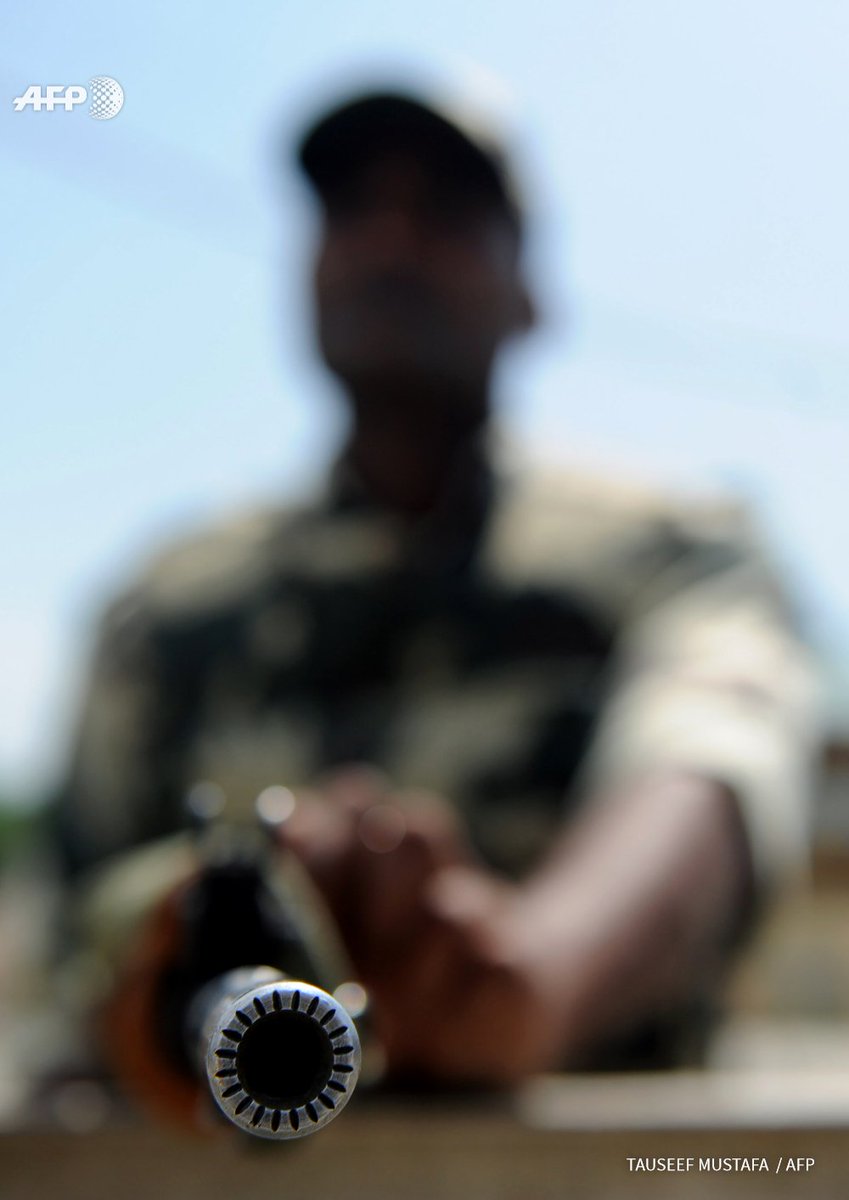
INDIA - An Indian paramilitary trooper stands guard outside The Bakshi Stadium in Srinagar. By @TauseefMUSTAFA: image via Frédérique Geffard @fgeffardAFP, 12 August 2016

INDIA - Indian government forces stands guard in central Srinagar. By @TauseefMUSTAFA #AFP: image via Frédérique Geffard @fgeffardAFP, 12 August 2016
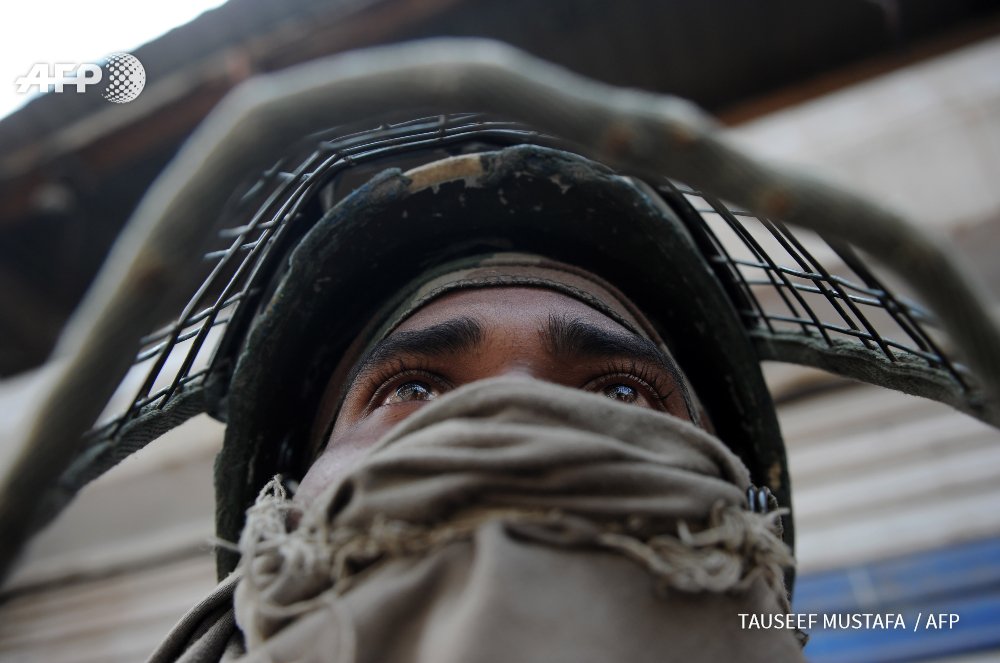
INDIA - A paramilitary trooper stands guard in Batmaloo Area of Srinagar during ongoing curfew: By @TauseefMUSTAFA #AFP: image via Frédérique Geffard @fgeffardAFP, 12 August 2016
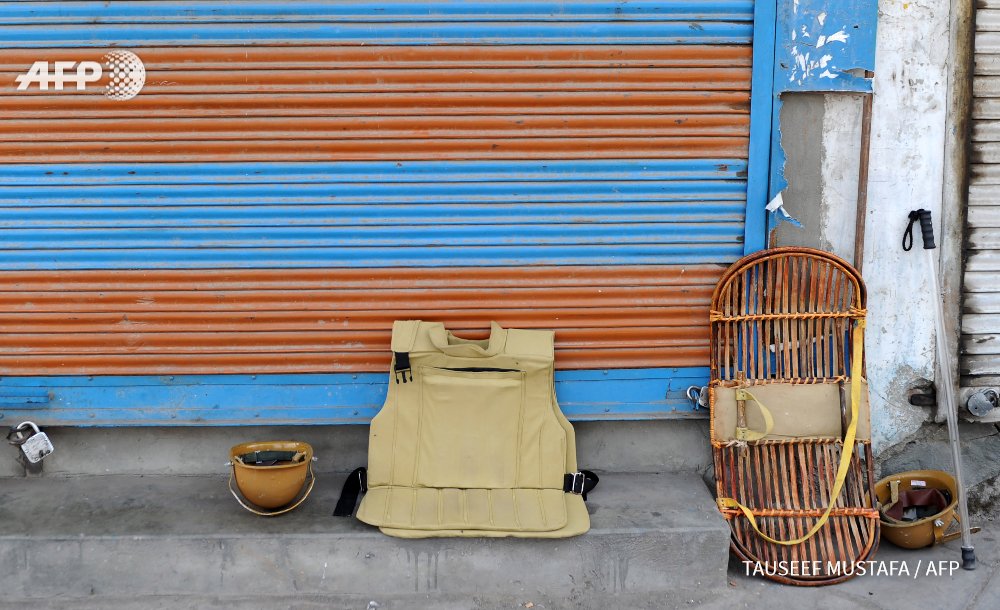
INDIA - Riot shields and bulletproof jackets of JKAP personnel lean against shops in Srinagar By @TauseefMUSTAFA #AFP: image via Frédérique Geffard @fgeffardAFP, 12 August 2016
There is a script, a standard operating procedure is put into play each time Kashmir erupts, seeking “azadi” from India. So this time, when after more than a month of total lockdown, killing of 56 young Kashmiris, and blinding of hundreds of others, New Delhi finally decided to hold an all-party meeting, I am not wondering about the outcome of this effort. It has happened before. I have seen it.
There will be a promise of a “dialogue with all stakeholders”, with the compulsory disclaimer that Jammu and Kashmir is an integral part of India. A group of parliamentarians may go to the Valley to “meet and ascertain” the reason for the uprising as if it is unknown to those in the corridors of power in Delhi. By the time the all-party delegation gets to Srinagar, Indian intelligence and security agencies would have gathered the same handful of groups for the meeting.
Like in 2010, wholesale mutton dealers will show up, shikarawallas will be rowed in and apple growers will be brought. Voices palatable to New Delhi will be told to spell out their requirements, while a few bureaucrats-turned-civil society members and former Ikhwanis-turned-politicians known to New Delhi’s dialogue circuit will be shooed in.
This time, though, the ground has shifted. There are two reasons for it.
First, the complexion of the uprising has changed on the ground and the movement for azadi has transcended human rights issues. Unlike previous upsurges in 2008, 2009 and 2010, the protestors aren’t angry against a civilian killing. Though there are a number of reasons for this accumulated anger, the trigger for this massive outpouring explains the shift.
These large gatherings aren’t a protest against the killing of Kashmiri militant Burhan Wani. Instead, Kashmir has risen to endorse what Burhan stood for and the consensus seems to be around one theme: “We don’t want to be part of India.” The language of the people has never been so clear.
When Kashmir erupted in 1990, it was a sudden explosion, the heavy cost of such a demand for freedom was unknown. The Kashmiri youth who decided to pick up the gun in 1990 were of my generation and as classroom after classroom emptied to join the militancy, there were few who understood the scale of the state repression that it would draw. Once the state crushed the initial phase of the militancy, the azadi movement turned into a lament, centered on human rights abuses. Each time armed forces would conduct cordon and search operations looking for militants, the entire male population would be herded at one place. One by one, they would be brought before a masked informer. There was so much fear, hardly anybody would protest.
In the beginning of the new millennium, while azadi continued to be the main demand, militancy started to take a backseat and hopes for a negotiated settlement arose. By 2008, there was a strong realisation that peaceful means alone would help. In 2008 and 2010, there were scores of instances where people made human chains around a security bunker or a vehicle of the armed forces to avoid a confrontation. People would throw stones only when the government disallowed peaceful marches. The government’s response to the rallies and the marches was the same as against the militant movement.
The peaceful protests were called “agitational terrorism” and sought to be crushed.
In 2016, there is no illusion that anything would convince New Delhi to accept and engage with the evident reality that a vast majority of Kashmiris don’t want to be part of India. The fear seems to have evaporated completely. The young men, who go out to confront the armed forces, are aware of the costs.
The hints for dialogue by New Delhi, the constituting of parliamentary committees and civil society groups that are sent to visit Kashmir after every uprising, are seen as nothing more than a façade aimed at soft surrender. Unlike in the past, the known structures of separatist politics too aren’t in control of the street.
The oligarchs of separatist politics are exhausted. The state hasn’t allowed them to do politics, leaving a big void. This uprising is run by a new generation born after 1990 -- the children of the conflict, as they are called -- and they are deeply suspicious of the customary peace talk.
The second reason is the policy shift in New Delhi. The reason why the Centre doesn’t want to even acknowledge the ground reality in Kashmir isn’t an aberration or a reactionary response by a few hawkish officials. It is a manifestation of the Modi government’s Kashmir policy.
Ever since P.V. Narasimha Rao declared that the “sky is the limit” for resolving the Kashmir dispute, New Delhi’s policy had been rooted in the belief that managing the conflict, maintaining status quo and delaying resolution will ultimately tire out the majority in Kashmir and end the political problem. While New Delhi used force to suppress the separatist movement, the “sky is the limit” promise was aimed at convincing the National Conference to participate in the 1996 assembly polls.
By getting an NC government to replace governor’s rule, New Delhi managed to put up a Kashmiri political face without upsetting the status quo and without losing direct control of Kashmir. When in June 2000, the NC passed the autonomy resolution in the assembly, the Vajpayee government rejected it summarily. It, however, kept the veneer of dialogue intact.
While maintaining and controlling the status quo, New Delhi kept sending emissaries — first politicians, then bureaucrats — and mostly, the talks were only about the modalities of talks. The emergence of both the PDP and the moderate Hurriyat between 1999 and 2004 was an outcome of New Delhi’s policies to create a favourable buffer between the pro-azadi camp and the integrationists.
Even Vajpayee’s much-hyped promise of a dialogue “within the ambit of humanity” was only a vague expression to allow the separatists to avoid the “taint” of surrendering by agreeing to talk within the framework of the Constitution. For New Delhi, the engagement itself became the objective. The UPA government set up working groups but didn’t consider their recommendations, sent interlocutors but disowned their report. There was a tacit understanding on Article 370 too: Erode it gradually to the point where there is no need to remove it.
The Modi government has only pulled the iron fist out of the velvet glove. Its policy is based on the ideological position of the RSS, which wants Kashmir’s “complete assimilation” by removing constitutional hurdles such as Article 370 and the Permanent Resident Act. The RSS calls the Kashmir dispute a myth, insists that the problem is limited to Sunni Muslims of the Valley and that even if Muslims are a majority, “85 per cent of the area is Hindu or Buddhist dominated”. In a speech in Kargil in 2014, Modi talked about his government’s focus on “20 per cent of Jammu and Kashmir’s population”, clubbing together “the West Pakistan refugees, Kashmiri Pandits and victims of militancy”.
The recent speech where Modi refered to Vajpayee’s “insaniyat” framework is a repeat of what he said in Srinagar in 2014. Arun Jaitley has explicated the regime’s understanding: “The political debate on the constitutional framework of Jammu and Kashmir’s population is no longer linked to the aspirations of common people.”
As Kashmir erupts again, I look back at the two decades of stories I wrote. I wrote about promises for resolving the conflict and the sterile notes of fact-finding teams and parliamentary committees. I wrote of despair as well as hope. It seems that I wrote only one story that is repeating itself.

INDIA - An Indian paramilitary trooper stands guard outside The Bakshi Stadium in Srinagar. By @TauseefMUSTAFA: image via Frédérique Geffard @fgeffardAFP, 12 August 2016

INDIA - Indian government forces stands guard in central Srinagar. By @TauseefMUSTAFA #AFP: image via Frédérique Geffard @fgeffardAFP, 12 August 2016

INDIA - A paramilitary trooper stands guard in Batmaloo Area of Srinagar during ongoing curfew: By @TauseefMUSTAFA #AFP: image via Frédérique Geffard @fgeffardAFP, 12 August 2016

INDIA - Riot shields and bulletproof jackets of JKAP personnel lean against shops in Srinagar By @TauseefMUSTAFA #AFP: image via Frédérique Geffard @fgeffardAFP, 12 August 2016
Kashmir: 35th Day: Bloody Friday, again

Kashmir 35th Day: Curfew, shutdown, clashes continue #Kashmir Srinagar, Aug 12 (KNS): image via Kashmir Global @kashmirglobal, 13 August 2016

Prayers were not allowed at Srinagar’s Jamia Masjid for the 5th consecutive Friday: photo by Faisal Khan, 13 August 2016
Bloody Friday in Kashmir again, more than a hundred wounded:
SRINAGAR: Scores of
people were injured once again by government forces in Kashmir on the
35th day of the anti-India uprising on Friday. SMHS and SKIMS, the two
main hospital of the valley, received 52 injured, mostly hit by pellets.
At SMHS, 19 of the 38 admitted have received eye injuries while at
SKIMS, among the 14 admitted was a person hit in the head. Scores of
other injured were treated at their district, sub-district hospitals.
The joint pro-freedom leadership as part of its programme ‘to end Indian occupation’ had called for protests after Friday prayers. Syed Ali Geelani and Mirwaiz Umar Farooq were kept under house arrest while JKLF chairman Muhammad Yasin Malik continues to languish in Central Jail Srinagar.
The joint pro-freedom leadership as part of its programme ‘to end Indian occupation’ had called for protests after Friday prayers. Syed Ali Geelani and Mirwaiz Umar Farooq were kept under house arrest while JKLF chairman Muhammad Yasin Malik continues to languish in Central Jail Srinagar.
In the 35 days of curfew and restrictions in Kashmir, 58 people
including two cops have been killed and over 5,500 civilians injured,
more than 500 with pellet injuries in their eyes.
The government had imposed strict curfew across the valley, snapped all private mobile phone services, and blocked all entry and exit points of districts by barricades and razor wires.
Police on Thursday had appealed to people to stop their children from taking part in ‘stone pelting’, besides asking clerics to not deliver provocative speeches.
Following not the appeal of the police but the directions of the pro-freedom leadership, people took out anti-India protest demonstrations and were attacked with pellets, teargas shells, pepper gas and aerial firing. At many places the protests morphed into pitched stone fighting, including in parts of the old Srinagar city soon after curfew was lifted in the evening.
Scores of peaceful protests were taken out from Rainawari, Chota bazaar, Kani Kadal, Sarai Bala, Chattabal, Mala Bagh, Bagh-e-Mehtab areas that were dispersed by forces using teargas shells, pellets and aerial firing. Friday prayers at the historic Jamia Masjid were disallowed for the fifth consecutive Friday.
According to locals, forces didn’t allow them to venture out of their homes.
Massive stone fighting erupted at Khag, Beerwah and Ompora areas of central Kashmir’s Budgam district after Friday prayers during which police used teargas and stun grenades to disperse the protesters. At least 40 protesters were reported to be injured in the clashes but all are said to be stable. Clashes also erupted at Kojer area of Ganderbal district after Friday prayers.
In north Kashmir, people jointly offered Friday prayers at Eidgah Qadem and Rangwar ground in Baramulla. Forces blocked the town’s four bridges -- Cement Kadal, Azad Gunj, Khanpura and Sheikh-u-Alam -- by razor wires. The Sheikh-ul-Alam bridge was blocked by iron rods. These bridges connect old town Baramulla with Civil Lines.
The forces paid scant respect to the curfew pass issued by the district magistrate. Kashmir Reader Baramalla correspondent Mushtaq Ahmad was told by army personnel that “only passes issued by them will be allowed.”
A journalist, Irshad Ahmad, working with an Indian national news channel was also beaten by forces in Baramulla.
In Bandipora, peaceful protests at many places turned violent when forces waylaid them.
A protest taken out from new Jamia Masjid was joined by other protesters, including women, at the district’s square.
A large procession on way to Kupwara Town from Muqam-e-Shah Wali was intercepted by police at Bohama and in the ensuing shelling, more than six persons sustained injuries.
Peaceful protests were also held at Kandi, Brambi and Arampora villages of Kupwara.
Stone fighting occurred at Kralgund, Tikkipora and other areas of Lolab. Protesters at Tikkipora smashed the vehicle of a PDP sarpanch from Dewar, Manzoor Ahmad. He escaped unhurt.
In Shopian, at least 8 people sustained injuries following clashes between government forces and local youths at main town Shopian, Ziyarat Sharief, Reshipora, Qoimoh, Bugam, Khudwani and Mohanpora areas. Incidents of stone-fighting also took place at Choudhary Gund near DC office in Shopian where youths hurled rocks at the troops.
In Damhal Hanjipora four persons received injuries after forces attacked a protest demonstration. The forces fired several rounds of teargas and pellets to disperse the protesters.
Massive demonstrations were held in Bijbehara, Aariwan, Goriwan and Srigufwara areas of south Kashmir’s Anantnag district. The protesters made heavy sloganeering in favour of freedom and against India.
A huge pro-freedom rally, witnesses said, was taken out in Dialgam after thousands of people offered Friday congregational prayers. The procession dispersed peacefully later.
In Mattan township of Anantnag district, thousands of people offered Friday prayers at Hanifa Eidgah. Later, hundreds of people raising pro-freedom, pro-Burhan and anti-India slogans marched along the Khanabal-Pahalgam road. The rally culminated near Pran Bhawan peacefully. Pro-freedom processions were also taken out in Arwani, and several areas of Dooru, Kokernag and Bijbehara.
In Anchidora locality of Anantnag, hundreds of people took out a protest rally after offering Friday prayers. Raising pro-Azadi slogans the protesters marched towards the main town. On reaching Laizbal they were prevented by government forces from marching ahead. Clashes followed.
In Kachdoora area of Shopian, witnesses said that the army resorted to aerial firing to disperse a procession that was marching towards the army camp. In Arhama village of the district, people after Friday prayers took out a rally towards main town Shopian. On reaching near the mini-secretariat, forces stopped them from moving ahead by lobbing a few teargas shells at the procession.
A harsh curfew was enforced in all the four district headquarters of the region and other major townships. Huge contingents of forces wearing riot gear were deployed in the streets of all towns to curtail the movement of people. Forces also blocked main entry points of all the district headquarters. In Anantnag, army men were seen enforcing restrictions near Mominabad. A photojournalist working for a local daily said that army men checked their mobile phones when they were returning after covering a rally at Dialgam.
A peaceful protest march was carried out in Pampore town after Friday prayers offered jointly at Khanqah-e-Molla. The march, attended by thousands, moved through several areas and raised pro-freedom and anti-India slogans. The march ended peacefully.
Reports said that more than a dozen persons sustained injuries in Burhan’s hometown Tral where heavy clashes erupted between youths and government forces. An official source at Tral sub-district hospital told Kashmir Reader that five persons injured during the clashes have been admitted to the hospital.
A youth sustained injuries during clashes in Kakapora area of Pulwama district where youths hurled stones at the forces while the forces resorted to heavy teargas and pellet gun firing.
Protest rallies were also reported from Ruhmoo and Gusoo areas where people carried flags and posts with them.
Clashes also erupted in Newa, Trisoo and Tahab areas of Pulwama areas after congregational prayers.
In Nagbal area of Shopian district, thousands of people jointly offered Friday prayers and held protest demonstrations in the village.
At least 47 persons sustained injuries in Doda district of Jammu division in Friday clashes that erupted in protests against the civilian killings. Locals said that police resorted to heavy ammunition firing to scatter the protesters who pelted forces with stones and raised pro-freedom slogans. A local Station House Officer (SHO) is reported to have sustained injuries.
Reports said that soon after the prayers, a group of youths engaged police in pitched battles at Ajar and Nowpora areas. Police lobbed tear smoke canisters to quell the protests.
Protesters from Poshkar, Khag, Sitharan, Habar who led a peaceful protest to Khag had to face pellets from the government forces with several youth receiving pellet injuries. The injured were later referred to SMHS for treatment.
Police version:
More than three dozen incidents of stone pelting were reported from different districts of the Valley including Anantnag, Pulwama, Kulgam, Shopian, Baramulla, Sopore, Kupwara and Bandipora. Curfew was imposed in Srinagar and in the towns of Ganderbal, Budgam, Anantnag, Shopian, Baramulla and Sopore.
After Friday prayers ‘miscreants’ assembled at various places and tried to disrupt the vehicular movement. At most of the places the ‘miscreants’ started pelting stones on moving vehicles, police and security force deployments.
The deployments exercised utmost restraint despite severe provocations at a number of places. Many police/security force men have been reported injured during these clashes.
At Arhama Ganderbal miscreants assembled on road and pelted stones on security forces. While tackling the situation six persons were injured.
At Dooru Tangmarg about 300-400 miscreants assembled on road and pelted stones on police and security forces. Two persons were injured, one of whom was shifted to Srinagar.
At Uttrsoo Anantnag miscreants pelted stones on police and security forces. While dispersing the mob, four persons suffered minor injuries who were discharged after first aid from the hospital.
Arrests:
A number of pro-freedom leaders were taken into police custody including Muslim League (ML) General Secretary Muhammad Rafiq Ganie, and shifted them to Srinagar’s central jail. Reportedly, police in the intervening night of Thursday-Friday raided the houses of several leaders including ML’s Rafiq Ganie, other ML leaders and activists, TeH’s Umar Adil and leaders and activists of other amalgams.
The leaders were arrested during the night and were lodged in police station Kothi Bagh and in the wee hours of Friday were shifted to Srinagar’s central jail.
The government had imposed strict curfew across the valley, snapped all private mobile phone services, and blocked all entry and exit points of districts by barricades and razor wires.
Police on Thursday had appealed to people to stop their children from taking part in ‘stone pelting’, besides asking clerics to not deliver provocative speeches.
Following not the appeal of the police but the directions of the pro-freedom leadership, people took out anti-India protest demonstrations and were attacked with pellets, teargas shells, pepper gas and aerial firing. At many places the protests morphed into pitched stone fighting, including in parts of the old Srinagar city soon after curfew was lifted in the evening.
Scores of peaceful protests were taken out from Rainawari, Chota bazaar, Kani Kadal, Sarai Bala, Chattabal, Mala Bagh, Bagh-e-Mehtab areas that were dispersed by forces using teargas shells, pellets and aerial firing. Friday prayers at the historic Jamia Masjid were disallowed for the fifth consecutive Friday.
According to locals, forces didn’t allow them to venture out of their homes.
Massive stone fighting erupted at Khag, Beerwah and Ompora areas of central Kashmir’s Budgam district after Friday prayers during which police used teargas and stun grenades to disperse the protesters. At least 40 protesters were reported to be injured in the clashes but all are said to be stable. Clashes also erupted at Kojer area of Ganderbal district after Friday prayers.
In north Kashmir, people jointly offered Friday prayers at Eidgah Qadem and Rangwar ground in Baramulla. Forces blocked the town’s four bridges -- Cement Kadal, Azad Gunj, Khanpura and Sheikh-u-Alam -- by razor wires. The Sheikh-ul-Alam bridge was blocked by iron rods. These bridges connect old town Baramulla with Civil Lines.
The forces paid scant respect to the curfew pass issued by the district magistrate. Kashmir Reader Baramalla correspondent Mushtaq Ahmad was told by army personnel that “only passes issued by them will be allowed.”
A journalist, Irshad Ahmad, working with an Indian national news channel was also beaten by forces in Baramulla.
In Bandipora, peaceful protests at many places turned violent when forces waylaid them.
A protest taken out from new Jamia Masjid was joined by other protesters, including women, at the district’s square.
A large procession on way to Kupwara Town from Muqam-e-Shah Wali was intercepted by police at Bohama and in the ensuing shelling, more than six persons sustained injuries.
Peaceful protests were also held at Kandi, Brambi and Arampora villages of Kupwara.
Stone fighting occurred at Kralgund, Tikkipora and other areas of Lolab. Protesters at Tikkipora smashed the vehicle of a PDP sarpanch from Dewar, Manzoor Ahmad. He escaped unhurt.
In Shopian, at least 8 people sustained injuries following clashes between government forces and local youths at main town Shopian, Ziyarat Sharief, Reshipora, Qoimoh, Bugam, Khudwani and Mohanpora areas. Incidents of stone-fighting also took place at Choudhary Gund near DC office in Shopian where youths hurled rocks at the troops.
In Damhal Hanjipora four persons received injuries after forces attacked a protest demonstration. The forces fired several rounds of teargas and pellets to disperse the protesters.
Massive demonstrations were held in Bijbehara, Aariwan, Goriwan and Srigufwara areas of south Kashmir’s Anantnag district. The protesters made heavy sloganeering in favour of freedom and against India.
A huge pro-freedom rally, witnesses said, was taken out in Dialgam after thousands of people offered Friday congregational prayers. The procession dispersed peacefully later.
In Mattan township of Anantnag district, thousands of people offered Friday prayers at Hanifa Eidgah. Later, hundreds of people raising pro-freedom, pro-Burhan and anti-India slogans marched along the Khanabal-Pahalgam road. The rally culminated near Pran Bhawan peacefully. Pro-freedom processions were also taken out in Arwani, and several areas of Dooru, Kokernag and Bijbehara.
In Anchidora locality of Anantnag, hundreds of people took out a protest rally after offering Friday prayers. Raising pro-Azadi slogans the protesters marched towards the main town. On reaching Laizbal they were prevented by government forces from marching ahead. Clashes followed.
In Kachdoora area of Shopian, witnesses said that the army resorted to aerial firing to disperse a procession that was marching towards the army camp. In Arhama village of the district, people after Friday prayers took out a rally towards main town Shopian. On reaching near the mini-secretariat, forces stopped them from moving ahead by lobbing a few teargas shells at the procession.
A harsh curfew was enforced in all the four district headquarters of the region and other major townships. Huge contingents of forces wearing riot gear were deployed in the streets of all towns to curtail the movement of people. Forces also blocked main entry points of all the district headquarters. In Anantnag, army men were seen enforcing restrictions near Mominabad. A photojournalist working for a local daily said that army men checked their mobile phones when they were returning after covering a rally at Dialgam.
A peaceful protest march was carried out in Pampore town after Friday prayers offered jointly at Khanqah-e-Molla. The march, attended by thousands, moved through several areas and raised pro-freedom and anti-India slogans. The march ended peacefully.
Reports said that more than a dozen persons sustained injuries in Burhan’s hometown Tral where heavy clashes erupted between youths and government forces. An official source at Tral sub-district hospital told Kashmir Reader that five persons injured during the clashes have been admitted to the hospital.
A youth sustained injuries during clashes in Kakapora area of Pulwama district where youths hurled stones at the forces while the forces resorted to heavy teargas and pellet gun firing.
Protest rallies were also reported from Ruhmoo and Gusoo areas where people carried flags and posts with them.
Clashes also erupted in Newa, Trisoo and Tahab areas of Pulwama areas after congregational prayers.
In Nagbal area of Shopian district, thousands of people jointly offered Friday prayers and held protest demonstrations in the village.
At least 47 persons sustained injuries in Doda district of Jammu division in Friday clashes that erupted in protests against the civilian killings. Locals said that police resorted to heavy ammunition firing to scatter the protesters who pelted forces with stones and raised pro-freedom slogans. A local Station House Officer (SHO) is reported to have sustained injuries.
Reports said that soon after the prayers, a group of youths engaged police in pitched battles at Ajar and Nowpora areas. Police lobbed tear smoke canisters to quell the protests.
Protesters from Poshkar, Khag, Sitharan, Habar who led a peaceful protest to Khag had to face pellets from the government forces with several youth receiving pellet injuries. The injured were later referred to SMHS for treatment.
Police version:
More than three dozen incidents of stone pelting were reported from different districts of the Valley including Anantnag, Pulwama, Kulgam, Shopian, Baramulla, Sopore, Kupwara and Bandipora. Curfew was imposed in Srinagar and in the towns of Ganderbal, Budgam, Anantnag, Shopian, Baramulla and Sopore.
After Friday prayers ‘miscreants’ assembled at various places and tried to disrupt the vehicular movement. At most of the places the ‘miscreants’ started pelting stones on moving vehicles, police and security force deployments.
The deployments exercised utmost restraint despite severe provocations at a number of places. Many police/security force men have been reported injured during these clashes.
At Arhama Ganderbal miscreants assembled on road and pelted stones on security forces. While tackling the situation six persons were injured.
At Dooru Tangmarg about 300-400 miscreants assembled on road and pelted stones on police and security forces. Two persons were injured, one of whom was shifted to Srinagar.
At Uttrsoo Anantnag miscreants pelted stones on police and security forces. While dispersing the mob, four persons suffered minor injuries who were discharged after first aid from the hospital.
Arrests:
A number of pro-freedom leaders were taken into police custody including Muslim League (ML) General Secretary Muhammad Rafiq Ganie, and shifted them to Srinagar’s central jail. Reportedly, police in the intervening night of Thursday-Friday raided the houses of several leaders including ML’s Rafiq Ganie, other ML leaders and activists, TeH’s Umar Adil and leaders and activists of other amalgams.
The leaders were arrested during the night and were lodged in police station Kothi Bagh and in the wee hours of Friday were shifted to Srinagar’s central jail.

A man passes by a fresh graffiti of Burhan Wani in downtown Srinagar on Thursday 11 August 2016 #kashmir #killings: image via Kashmir Global @kashmirglobal, 11 August 2016

Pic: Written in blood "Go India Go Back" A protest rally against indian occupation of #Kashmir at Pantha Chowk: image via Syed Ali Geelani @sageelani, 13 August 2016

Senior doctors outside SMHS hospital protesting in a unique way. Message, stop firing pellets on eyes of protesters.: image via Mufti Islah @islahmufti, 10 August 2016

This is how Indian occupation forces treats lawmakers In #Kashmir. Er Rashid, lawmaker. Srinagar. 12 August 2016: image via Javaid Shaikh @javaidShaikh, 12 August 2016

This is how Indian occupation forces treats lawmakers In #Kashmir. Er Rashid, lawmaker. Srinagar. 12 August 2016: image via Javaid Shaikh @javaidShaikh, 12 August 2016

This is how Indian occupation forces treats lawmakers In #Kashmir. Er Rashid, lawmaker. Srinagar. 12 August 2016: image via Javaid Shaikh @javaidShaikh, 12 August 2016

This is how Indian occupation forces treats lawmakers In #Kashmir. Er Rashid, lawmaker. Srinagar. 12 August 2016: image via Javaid Shaikh @javaidShaikh, 12 August 2016

Independence Train: Policewomen stand guard beside a poster bearing the image of Burhan Wani of #Kashmir in Islamabad: image via Kashmir Global @kashmirglobal, 11 August 2016

A Pakistani railway official waves a green flag to start the Independence Train in Islamabad: image via AFP Islamabad/Kabul, 11 August 2016
Celebrating the liberation
Celebrating the liberation of #Manbij from #ISIS. #Aleppo #SDF: image via Basileus Zeno @Basileus Zeno, 13 August 2016

Celebrating the liberation of #Manbij from #ISIS. #Aleppo #SDF: image via Basileus Zeno @Basileus Zeno, 13 August 2016

Celebrating the liberation of #Manbij from #ISIS. #Aleppo #SDF: image via Basileus Zeno @Basileus Zeno, 13 August 2016

Celebrating the liberation of #Manbij from #ISIS. #Aleppo #SDF: image via Basileus Zeno @Basileus Zeno, 13 August 2016

MYANMAR - A child walks in floodwaters in Kyangyi Dauk village near Darka. By @ye_aung_thu #AFP: image via Frédérique Geffard @fgeffardAFP, 2 August 2016

RUSSIA - Gorilla Kira holds her baby born at the zoo in Moscow. By @vasilymaximov #AFP: image via Frédérique Geffard @fgeffardAFP, 11 August 2016

IVORY COAST - A woman holds a baby as she sits on a bed under a mosquito net in Abidjan. By Sia Kambou #AFP: image via Frédérique Geffard @fgeffardAFP, 11 August 2016

HAITI - A group of men work repairing fishing nets in the
Cite Soleil, Port-au-Prince. By @hectorretamal #AFP: image via
Frédérique Geffard @fgeffardAFP, 12
August 2016

THAILAND - A labourer inspects the damage next to the site of a bomb attack in Hua Hin. By Lillian Suwanrumph #AFP: image via
Frédérique Geffard @fgeffardAFP, 12
August 2016

SYRIA - Syrians buy sweets at a market in an opposition-held district in Aleppo. By @THAER_MOHAMMED #AFP: image via Frédérique Geffard @fgeffardAFP, 12 August 2016

FRANCE - A migrant orders a tea in a makeshift restaurant in 'Jungle' migrant camp in Calais. By Philippe Huguen: image via AFP Photo Department @AFPphoto, 12 August 2016

An elephant separated from its herd by floods is saved from drowning by villagers in Bangladesh #WorldElephantDay: image via AFP news agency @AFP, 12 August 2016

An elephant separated from its herd by floods is saved from drowning by villagers in Bangladesh #WorldElephantDay: image via AFP news agency @AFP, 12 August 2016

An elephant separated from its herd by floods is saved from drowning by villagers in Bangladesh #WorldElephantDay: image via AFP news agency @AFP, 12 August 2016

In #Libya, thousands of parents are watching their babies learn to walk in makeshift migrant prisons: image via MSF Sea Verified account MSF_Sea, 11 August 2016

On week ago in #Libya, this man was repeatedly beaten with an iron bar on the soles of his feet. He's in agony.: image via MSF Sea Verified account MSF_Sea, 11 August 2016

Did you know that 3,673 #people have died in the sea this year? "We didn't care, death cannot be worse than #Libya.": image via MSF Sea Verified account MSF_Sea, 9 August 2016

The Perseids meteor shower near Poznan, in Poland, on Thursday: photo by Lukasz Ogrodowczyk/European Pressphoto Agency, 11 August 2016

The Perseids meteor shower near Poznan, in Poland, on Thursday: photo by Lukasz Ogrodowczyk/European Pressphoto Agency, 11 August 2016
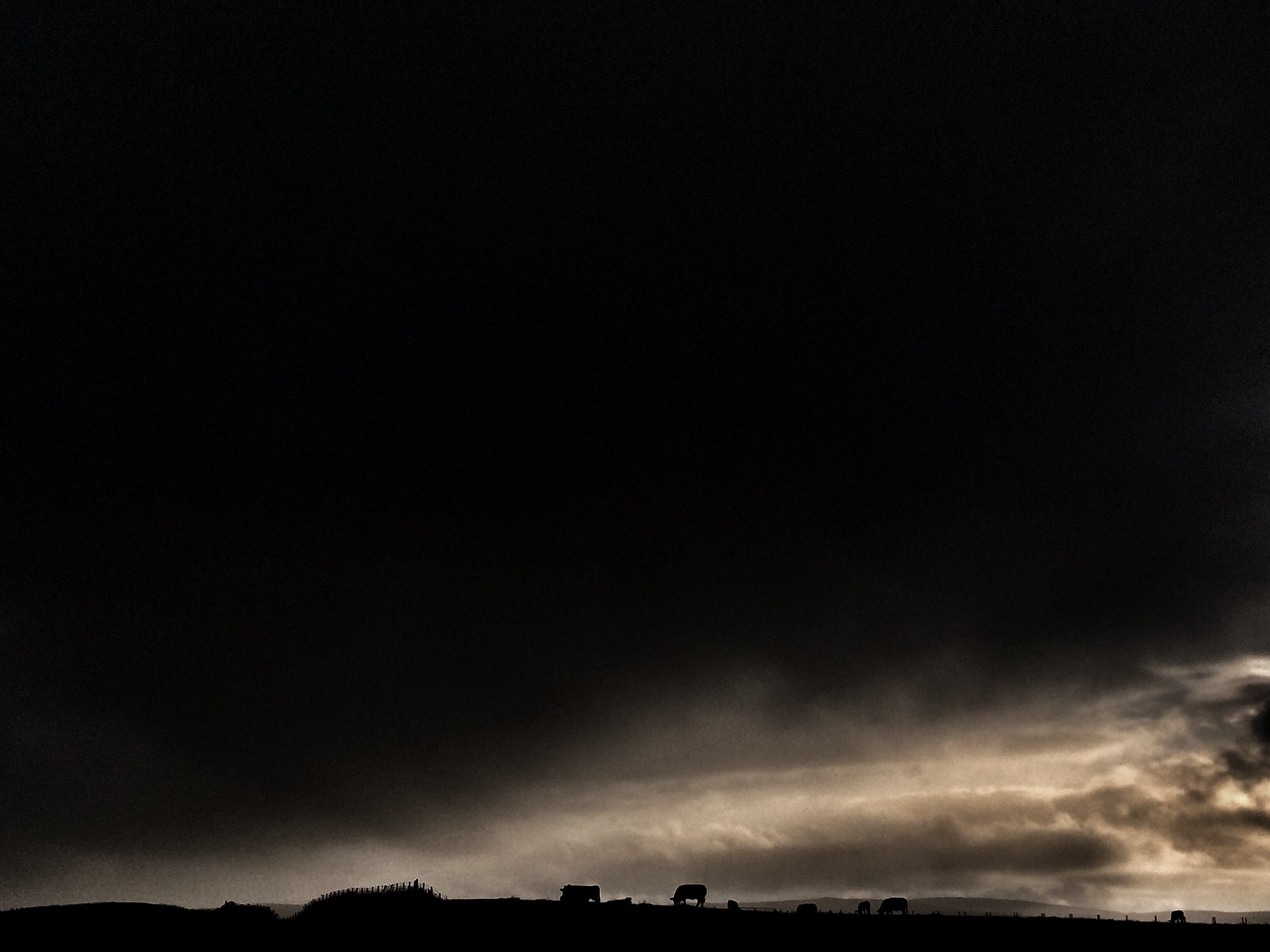
Hoy

The Perseids meteor shower near Poznan, in Poland, on Thursday: photo by Lukasz Ogrodowczyk/European Pressphoto Agency, 11 August 2016

The Perseids meteor shower near Poznan, in Poland, on Thursday: photo by Lukasz Ogrodowczyk/European Pressphoto Agency, 11 August 2016


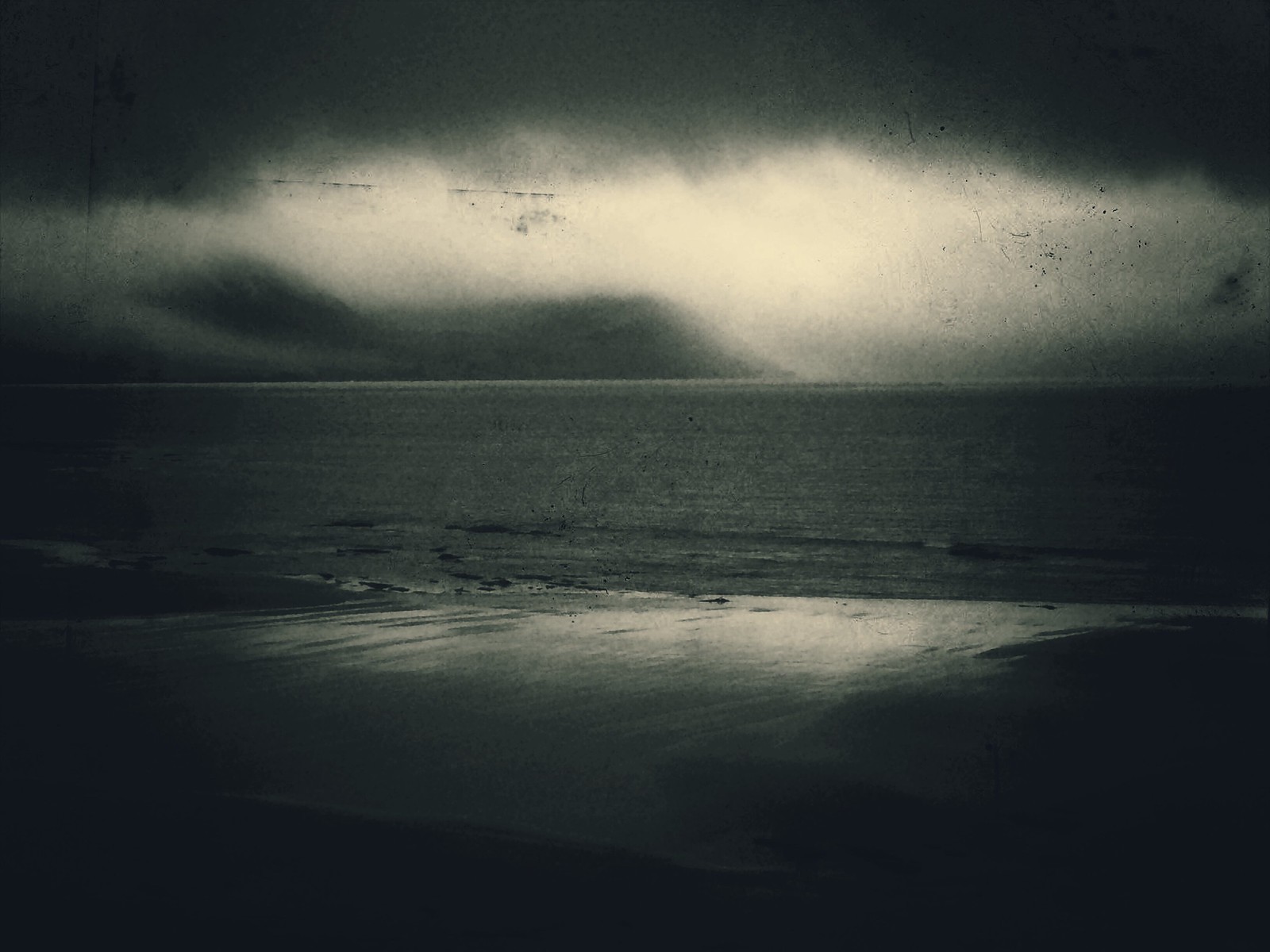
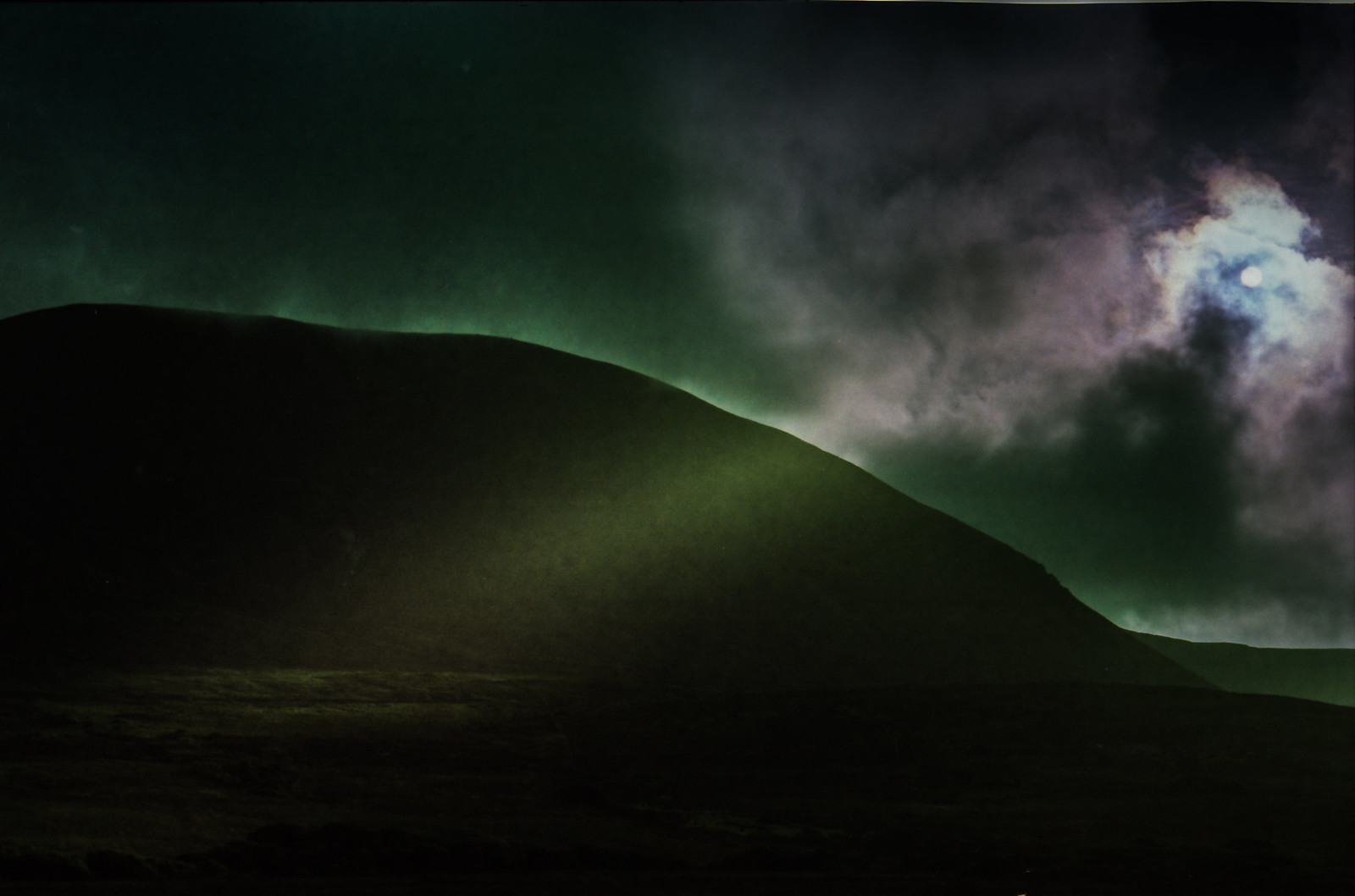



6 comments:
Whenever there's "talks" there's always an assumption of equity. Over here, Jeremy Corbyn has been vilified for openly meeting with Sinn Fein representatives at precisely the same moment when Thatcher's government was deep in private meetings.
What worries me about Kashmir is that nobody is paying attention, nobody's talking. Even the sullied, thoughtless peace of the 9 counties wouldn't do.
Thank you for your posts , Tom. The worst enemy is this work of forgetting.
Thank you, Duncan.
I did see yestereve in The Independent T. May is now the... can't remember if it was most popular person in Britain, or merely most popular politician.
Meanwhile we're to be Hillaried into... continuing to neither know nor remember...
The sole person with whom I have yet spoken, here in Murica, who knew what or where Kashmir is or was, was (is) a former Indian Security Forces intelligence officer, who served in the J&K border regions.
At least the Palestinians have their aura and their international support.
Pathein
Tom,
In the spirit of the internationalism yr posts and photos continue to inspire, sharing a bit from Pothik Ghosh (a dear comrade)'s piece, originally posted here:
" There is something Indian mainlanders outraged by the unspeakable brutalities inflicted on Kashmir by the Indian occupation need to realise. Kashmir’s national liberation struggle needs neither the charity of their teary-eyed pity for the plight of Kashmiris; nor the slightly more honourable philanthropy of directing their self-flagellating anger and outrage, abstractly and impotently, at the Indian state and its brutal occupation. What such mainlanders need to actually give is the non-exchangeable gift of solidarity to the Kashmiri movement. And that is precisely what they have failed to offer. That such solidarity is fundamentally distinct from — nay radically opposed to — patronising sympathy for the suffering victims of Kashmir is something one can hardly overstate. Unfortunately, almost all mainlanders who claim to be in solidarity with the Kashmiri struggle against Indian occupation have the two badly mixed up. (As for the politically correct Indian liberal, who is enraged only and mainly by the human-rights abuses carried out in the Valley, the less said the better.)
Sympathy and charity are constitutive of an economy, at once symbolic and political, of exchange and power. And that does not change even if one chooses to construe them, unwittingly or otherwise, as solidarity. If anything, such conflation of solidarity with sympathy and philanthropy amounts to articulating the existing hierarchised socio-political relation between Indian mainland and the IoK (Indian occupied Kashmir) in yet another register. That serves to legitimise and reinforce — admittedly by other, apparently more consensual means — both that relation and the military occupation constitutive of it. It’s time one clearly understood the difference, and learned to disentangle one from the other. Solidarity is not a sentiment to be abstractly expressed and extended. It is a politics that has to be produced as a concrete strategy and materiality. Frantz Fanon, while criticising the ‘solidarity’ extended by “French intellectuals and democrats” to the Algerian struggle against French occupation, underscored precisely that. In an article, ‘French Intellectuals and Democrats and the Algerian Revolution’, he writes:
“…French intellectuals and democrats have periodically addressed themselves to the FLN. Most of the time they have proffered either political advice or criticisms concerning this or that aspect of the war of liberation. This attitude of the French intelligentsia must not be interpreted as the consequence of an inner solidarity with the Algerian people. This advice and these criticisms are to be explained by the ill-repressed desire to guide, to direct the very liberation movement of the oppressed.
“Thus can be understood the constant oscillation of the French democrats between a manifest or latent hostility and the wholly unreal aspiration to militate ‘actively to the end.’ Such a confusion indicates a lack of preparation for the facing of concrete problems and a failure on the part of French democrats to immerse themselves in the political life of their own country.”
The question that has been driving many mainland Indians in their self-proclaimed solidarity with the Kashmiri national liberation struggle, is the following: what can and should they do for Kashmir and its struggle against occupation? However, in order to produce solidarity as a strategy and materiality of politics they would do well to reverse the question: what is the Kashmiri movement against Indian occupation doing – or can potentially do – for the everyday struggles of the masses in the Indian mainland? The answer to that is something they need to build on.
Aditya,
How sweet to be hearing from you again, my brother...
The Pothik Ghosh piece, which indeed I've sought out and read in its entirety, and have been thinking about all day, is quite compelling certainly.
"For this reason, mainland Indians committed to forging an effective politics of solidarity with the Kashmiri national-liberation struggle must necessarily double up as militants of proletarian-revolutionary politics."
I value and appreciate every sensible word I can find on the subject of the Kashmiri freedom struggle, the resistance to Occupation there, which from far away can only appear a natural and inevitable if also necessarily painful development, part of a larger global struggle..
But -- correct me if I am wrong here -- there is concurrently the fear, as with all academic proposals, even the most enlightened ones -- that in the present techno-capitalist structure of things, the danger would be to think ahead of the realities.
Does not the present techno-economic "development" of India bring it ever more closely into the centre of world power? And would not that drift, or rush, toward centrality, of itself, make "doubl[ing] up as militants of proletarian-revolutionary politics" a sort of idealistic fantasy?
There is so much to be said and thought about, here. And so much to be suffered and endured, there.
Very grateful for any enlightenment.
Yes Tom you are, of course, spot on with your question.
The contradiction between the global economic aspirations our ruling govt harbours and the Brahmanical Hindu nationalism it espouses at the same time, is, I believe, not an anomaly but a contradiction fundamental to the present techno-capitalist structure of things. There is an uncanny strangeness to the present neoliberal integration of the globe. For example, on the one hand, over the past fifty or so years, finance and techno-capitalism has been incessantly forcing the Third World to open its markets. But at the same time, never before had the unconscious, as it were, of this drive of imperial-globalisation emerged as forcefully and violently as the present refugee crisis in Europe. The failure to seize this contradiction, which is immanent to capital's continual self-surpassing, is what manifests as the present paranoia of Fascism, a paranoia from which, if one does not suffer and thereby bash-n-trash Modi, Sarkozy, Trump, and so on, then one is likely to be branded as a "fascist" stooge! Or, if you are in America, then one certainly runs the danger of being labelled a "fascist" patriarch who refuses to accept the fact that finally, with Hillary Clinton (that arch-imperialist of a patriarch!) woman-power is where it truly belongs. And where is that, if one may ask? In the un(wo)manned cockpits of those drones bombing our Palestinian and Syrian brothers? Or in the boardrooms of Wall Street gutting the rest of whatever welfare there still remains in circulation.
In our own country, this contradiction has manifested in various forms-- a gimmick promise of national self-sufficiency which is sustained by the programmed state-diktats of "Make in India" (which always remind me of the neon gloat-signs Subway has been flashing, for some time now, in our markets-- "we bake our own bread"-- as if they grew their own wheat, used their own seeds, and grew it on a planet which was all their own, and as if their we" was our "we" too, which is to say, following Marx, who is making the bread after all)
and secondly this contradiction has manifested in a brutal crackdown on the proletarian sections of our society--- industrial belts in the NCR region, several universities across India, Kashmiris, Dalits, and so on. . . Before the insurrection could emerge in the Indian Occupied Kashmir, at the turn of the year isolated protests emerged in JNU and other universities after sedition charges were slapped on student leaders for organising a meeting against the Indian Occupation of Kashmir. Later, the protest, instead of emerging as a determinate movement against the Indian occupation of India itself, co-opted the question of Dalit identity, subsumed the suicide of Dalit militant activist Rohit Vemula, effaced the very question of Kashmir's freedom, and sought out to consolidate a certain nationalist consciousness, the sole objective now being to save from the Right-wing populism a university which has always been a cesspool of reified Indian-Left politics breeding Brahmanical intellectual elites by the plenty.
Continued. . .
In the light of the events I have only perfunctorily alluded to, Pothik's piece must be contextualized in the current state of Indian left-liberal politics which has failed to understand the present strife and regimentation as the effect of a contradiction fundamental to the techno-capital structure of our world. Say, what is the point of holding student-meetings supporting, in principle, the cause of Kashmir, or protesting against the changes in curriculum, or whatever, when, speaking concretely and particularly, you, let alone build a strategic militant solidarity with, do not even understand that the university of ideas (or rather, as you say, idealistic fantasies) sustains itself by oppressing, say, the sanitation workers, clerks, and a whole lot of other "manual" workers?
I am backchanneling a pamphlet we had written during the events of January-February which, one hopes, might try and clarify, if only a little, the situation at this end of the world.
Post a Comment